Congratulations to all shortlisted photographers across the seven major categories of APA 2022. This year’s galleries represent a vibrant, nuanced and diverse collection of contemporary Australia. Our deepest thank you to everybody who participated, we feel honoured to have considered your photographs. Please join us for the APA Exhibition & Awards Ceremony on November 19th at Bodriggy Brewpub where we will be exhibiting the top five finalists from each category, and announcing the 2022 prize recipients.
Please find the 2022 APA Shortlist below, presented in alphabetical order.
People

Alexandrena Parker
Nostalgia is a theme that drives my passion for photography. I’m not really sure which era I yearn for however I am drawn to a scene without any evidence of today. Flinders Girls was created with the purpose of transporting the viewer to a time that feels familiar but also fictitious… like snap shots from a storybook.

Alister McKeich
Uncle Jack Charles holds a special place in many peoples' hearts, myself included. Having personally worked with him in many capacities for well over a decade, his warmth, vitality, smile, wisdom and sense of humour were traits that enamoured this respected Elder, actor and national treasure to all who had the good fortune to cross paths with him. This photograph was taken in a back alley off Smith Street - a fitting location for whom such streets and alleyways Uncle Jack called home for many decades. Shot on 35mm film

Amy Woodward
"Eb in her backyard, 25 weeks pregnant. In 2018, Eb was diagnosed with stage 3 breast cancer and needed a double mastectomy. She chose to stay flat, rather than go through the numerous surgeries needed for reconstruction - despite a plastic surgeon telling her it was her husband’s choice and not hers. She chooses not to wear prosthesis in day-to-day life as she feels no less of a woman just because she doesn’t have breasts - and she’s proud to model that for her 16 year old daughter. Eb was told after all of her treatments that she and her husband would not be able to conceive without IVF, but much to their surprise she fell pregnant in 2021."

Anabel Litchfield
An Aboriginal woman and a South Sea Island woman embrace their Maori sister as she mourns her recently passed husband. She says “I had just recently suddenly become widowed. This beautiful Indigenous lady held me and prayed for me with in her language. She then spoke to me in English repeating the words "No more pain". I felt the overwhelming weight of grief lift off me.” Prayers and tears and solidarity and sisterhood in full flight.

Bernard Singleton
"This collaborative photographic series presents intimate portraits of three generations of Bernard Singleton Jnr’s family—his father, his niece and himself—each coated in a layer of coarse white clay. Known as medicine clay, this revered material is often used by members of Bernard’s family for the treatment of sore bellies, women’s business, and general wellbeing. Over this medicine clay, a rich, red ochre has been painted onto each figure in heavy, oily streaks. This ochre is used by Simone and Bernard to represent ancestral connections to Country, and the transfer of knowledge between generations. Its placement is significant to each bearer. Stripes of ochre stretch across Bernard’s hands and foreheads, signifying their own responsibilities to learn and pass on this knowledge. In these photographs, Simone and Bernard seek to create a record of knowledge, rituals and customs to be passed on to coming generations. Quiet and meditative, they convey a sense of intense presence and magnanimity."
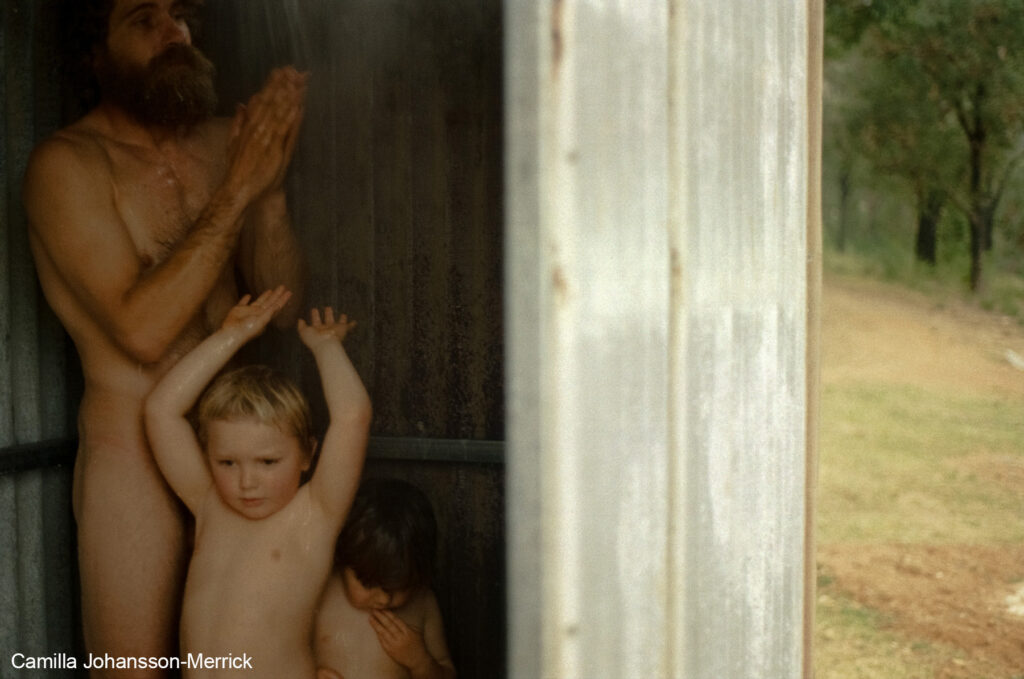
Camilla Johansson-Merrick
"Tom with our sons, Marley and Iggy, having a bush camp shower. From my on going series "Watching Bowerdbirds - a (love) story" a visual interpretation of my partners journey with severe chronic illness. A story of connection. A story of pain. A story of endurance. A story of hope. But most of all, a story of love."

Cat Leedon
At age 36 I was diagnosed with breast cancer. As I searched to understand my diagnosis, prognosis and treatment options, I was bombarded with endless photos of mostly older women, smiling in pink. The brave warriors who had survived – thriving and happy. But as a young single mum of two, contemplating my life being cut short – I wasn't smiling, I was in pain. The toxic positivity of being shown only happy survivors simply added to my anguish. I'm not brave, thriving, happy. I'm scared, scarred, and numb. This self-portrait was taken two weeks after my second breast surgery.
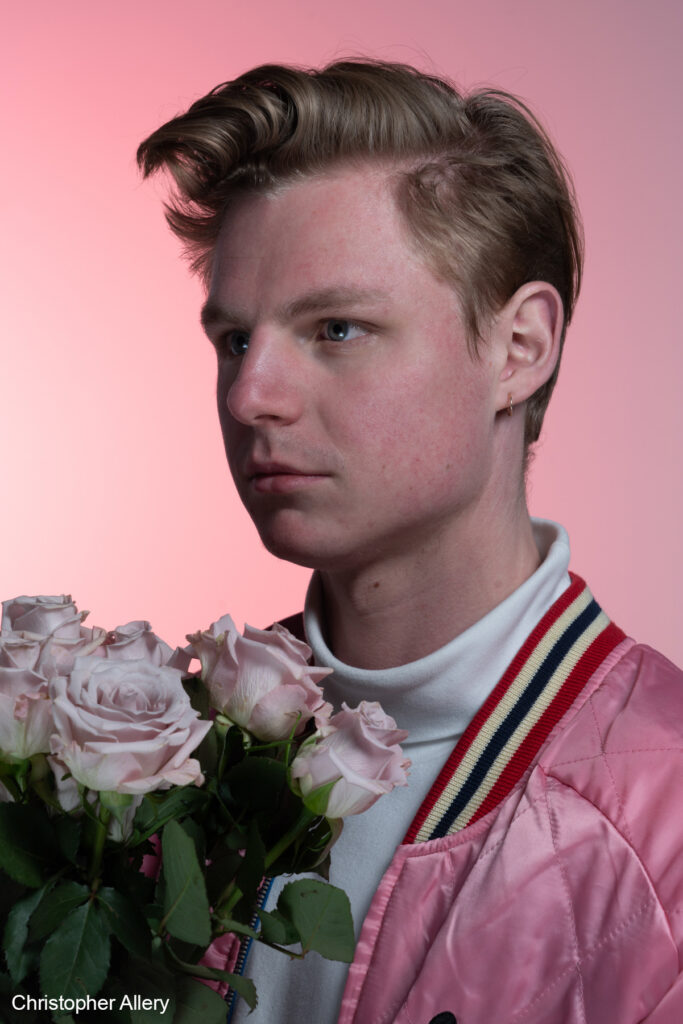
Christopher Allery
Michael' is a young Queer man living in Melbourne/Naarm. Whilst photographing him in a studio setting the introduction of pink roses as part of the composition became more than a mere prop. They were immediately a charged object. For Michael the idea of giving flowers as a romantic gesture to another man was a complicated act. For him coming out in his earlier life was not an easy process and took years. This image for me plays on all the complex tensions of the vulnerabilities of a Queer individual expected to operate within traditional heteronormative modes of courting.

Darrian Traynor
"WA is being urged to compensate heartbroken mothers who were forced to give up their babies for adoption because they were unwed and considered ‘dirty’, a shocking practice that went on for decades. The Victorian Government is currently drafting the nation’s first redress scheme and momentum is building in Queensland, fuelling hopes WA will follow suit, especially given the State was the first Australian jurisdiction to formally apologise to the women in 2010. Marilyn Murphy says she was 18 in 1970 when she was “groomed” over nine weeks at Ngala’s Kensington “incarceration centre” then forced to sign adoption papers six days after giving birth at Catholic-run St Anne’s Maternity Hospital in Mt Lawley. “We were ‘classified’ as intellectually inferior and a moral risk to society,” she said. “I was shamed and condemned, and brainwashed to believe I was unworthy of my own child.” Her mother was deeply religious and together they were “prime targets” for a “hideous social exercise”, she said. “I was constantly reminded if I loved my child, I would do what was best for her,” Ms Murphy said. “I could feel them closing in, my visitors were stopped, I had no contact with the outside world. “I thought ‘once I get to the Christian hospital, all will be sorted out’. “Nothing could have been further from the truth.” She said the nurses were “trained, disdainful and clinical”, and alleges her labour was deliberately protracted to wear her out. When her daughter was finally born, she was sobbing uncontrollably. “They told me to pull myself together,” Ms Murphy said. “I was nothing but a body to them: All they wanted was ‘the commodity’, my daughter.” She said it felt her daughter had been “abducted” in a “streamlined practice that served the Catholic church well”. “Numbers for the flock, money in the future in the coffers and of course they made a good profit on the transaction,” she said. “This w

Ellamay Fitzgerald
This portrait of Wanida Serce is part of an ongoing series that explores lineages of Asian ancestry through symbolic artefacts, and the crossover of western influences on mixed-race identities. Using personal belongings of cultural significance; a traditional Thai earpiece and native Orchids of Thailand, the work reveals memories of childhood, tradition and familial connections of the subject and of second generation Asian Australians. It is through the subject and the artefacts that a new language describing mixed-race experiences is shaped and captured through the lens of the artist; herself of Australian-Thai heritage.
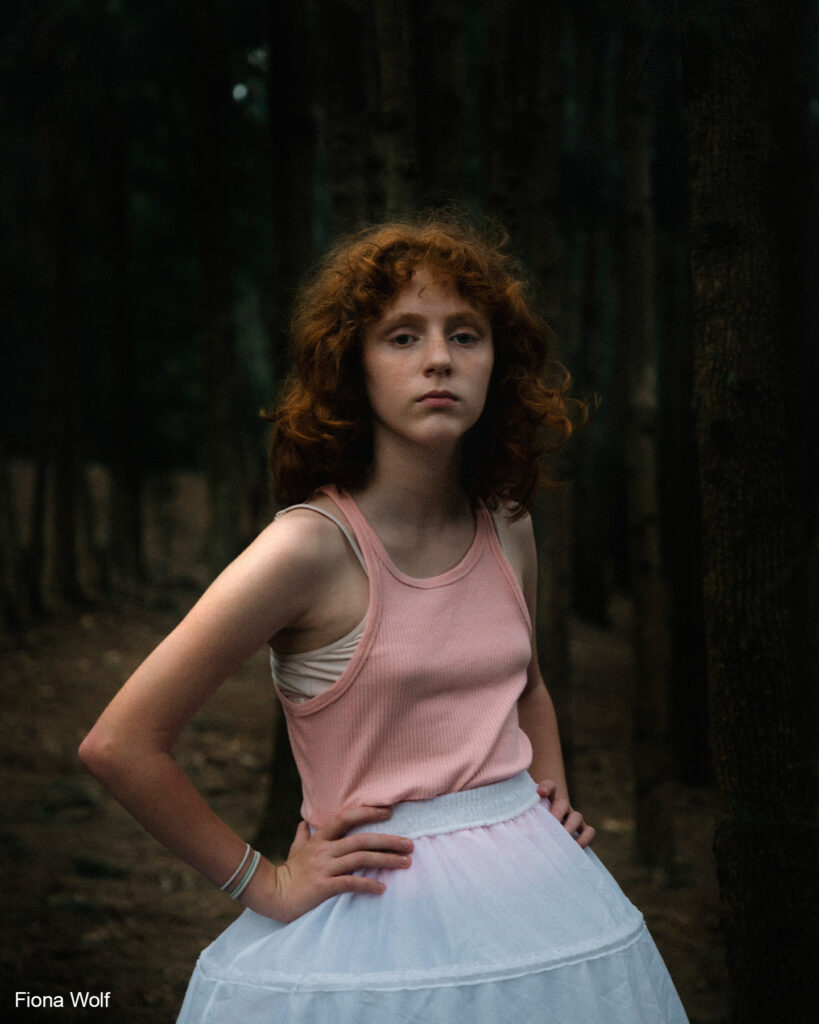
Fiona Wolf
"Mable, Newtown 2021 Personal Work “I photographed Emma and her kids Mable and Lou in their backyard in 2012. 10 years later, our kids are at the same school, and I have photographed them again having witnessed them growing up in our community here in the Inner West of Sydney. Mable’s confidence is admirable. It shows what expressive and creative people they have become within a diverse and inclusive Inner West Sydney community.”
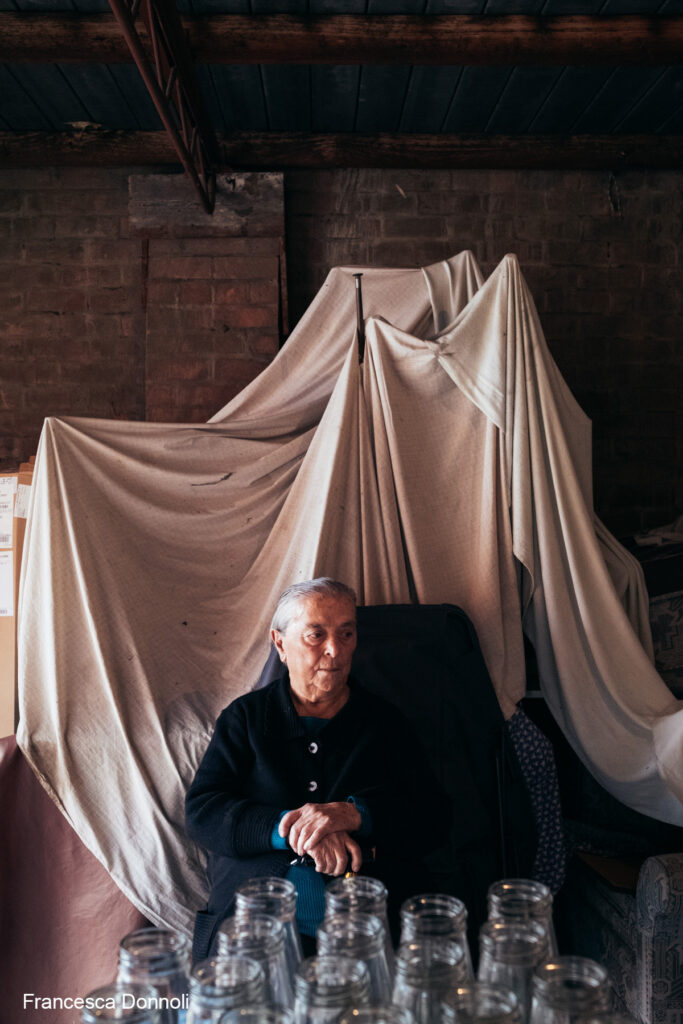
Francesca Donnoli
This image is of my late grandmother, Maria. The family is taking part in our annual tradition of making passata. No longer able to take part due to dementia and Parkinson's disease, she is seen sitting in her garage observing her family. It is a tradition which she brought with her when she migrated from Italy in 1956.
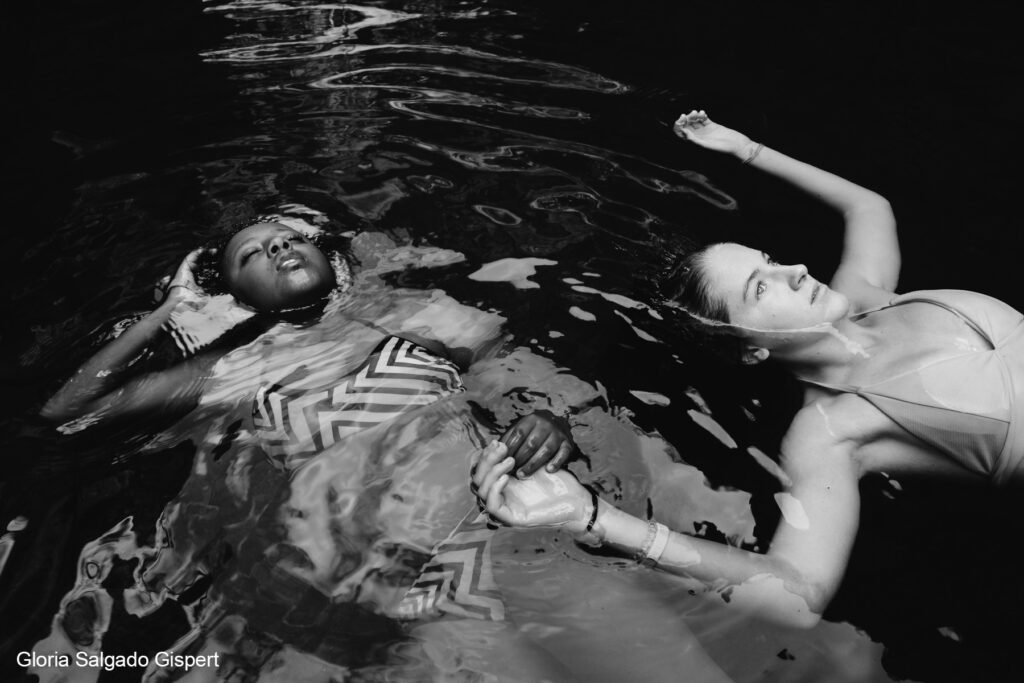
Gloria Salgado Gispert
"In this project I photograph what is closest to me in an effort to communicate who I am and my relationship with my two daughters. I want to get closer to them and see all those details of their everyday that I was starting to miss. This work is about relationships, sharing and building trust. About friendship, care and love. I try to portrait them sensitively, show their differences and coexistence. When I look at my daughters I see how close I am to not being able to photograph them anymore. It's time to let them go but our home will stay with us always."
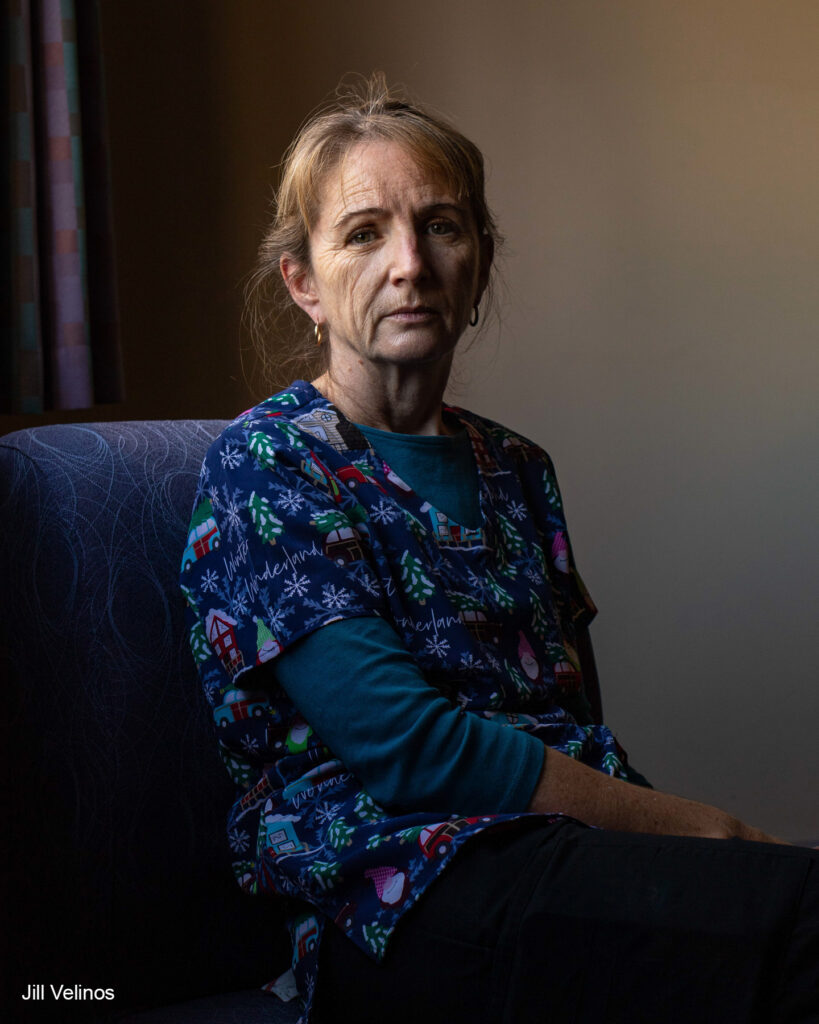
Jill Velinos
Rose is a Registered Nurse. Her patients would not recognise her because her face is always covered up. This portrait brings recognition to Rose along with all of the essential workers who have slogged it out since the beginning of 2020. Rose is the face that represents two and a half years of an unrelenting challenge.
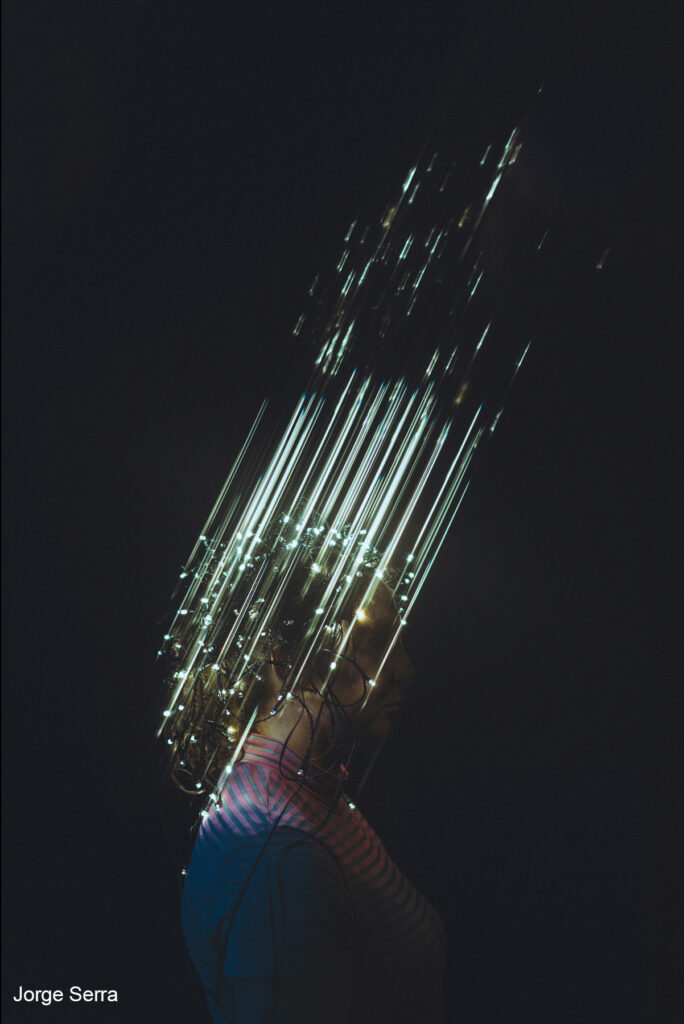
Jorge Serra
This portrait is of a young woman with an acquired brain injury. The title of the work derives from a question she asked - “Can you explain normal?”. As someone who is constantly reminded of society’s limited definitions, this image seeks to portray her mind not for its limitations but for its endless possibilities, shifting perceptions and balancing the power dynamic in her own narrative.
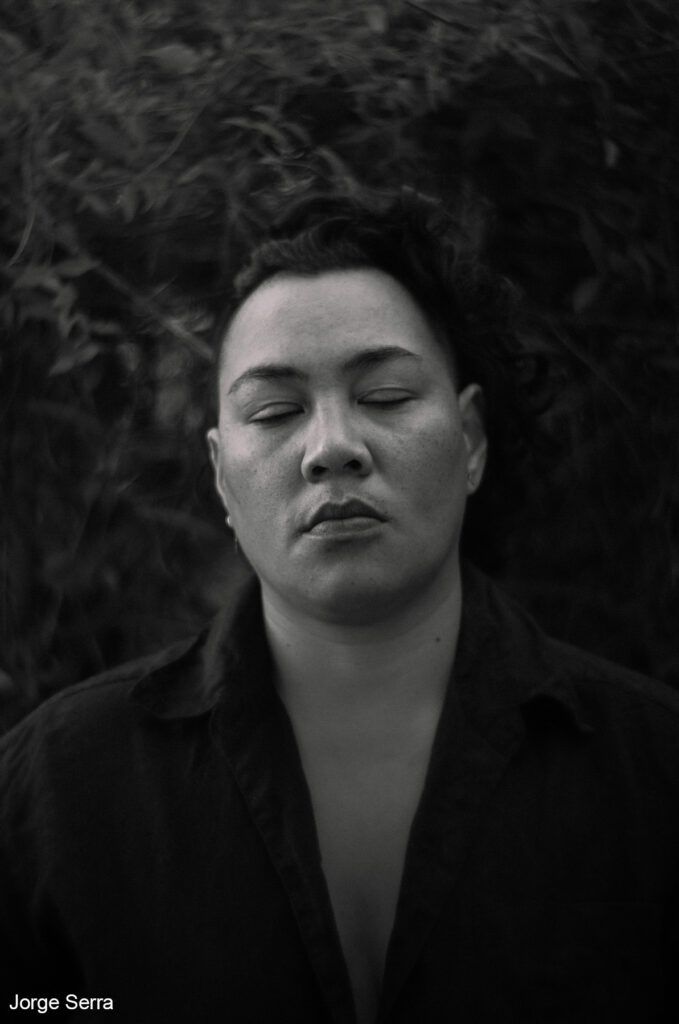
Jorge Serra
This portrait was taken during the height of the covid pandemic in Australia. It captures a quiet moment of introspection after conversations shared about the devastating changes taking place. Ofa, the subject of the photograph, represents two key communities as both an artist and person of colour - two marginalised communities that felt the impact of the crisis disparately.
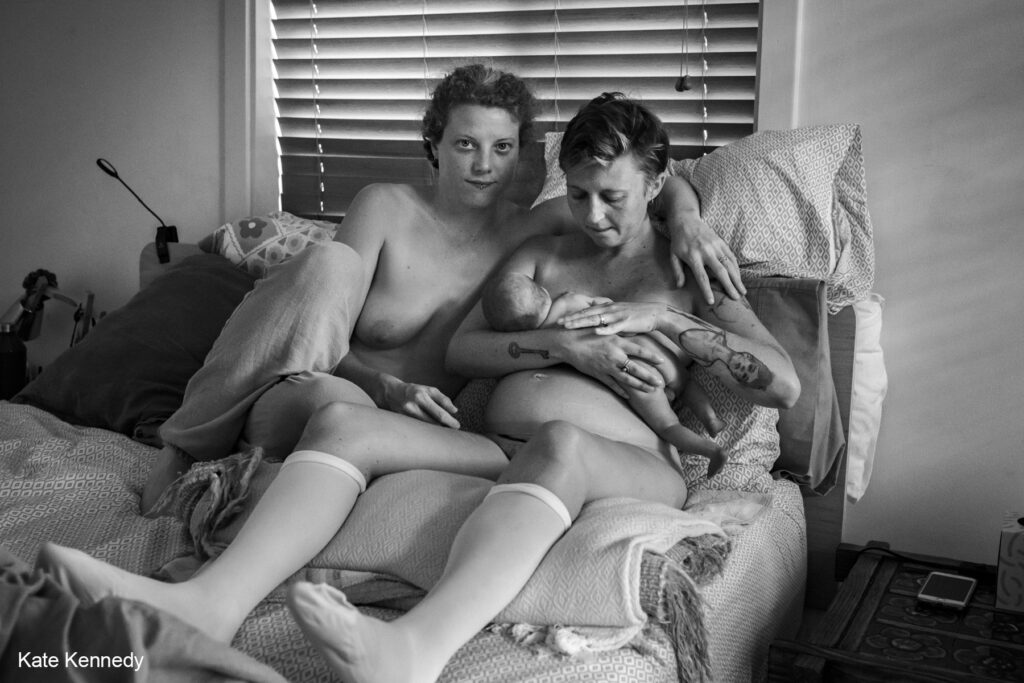
Kate Kennedy
When their planned gentle homebirth turned into an emergency caesarean in the hospital, Beth & Ness were left shaken. Like many birthing couples during the time of COVID hospital restrictions, they were separated immediately following the birth of their son Felix, which only served to exacerbate the loss of all control. Three days later back in their home, the pain was still raw and acceptance still eluded them, but together they were finding their way.
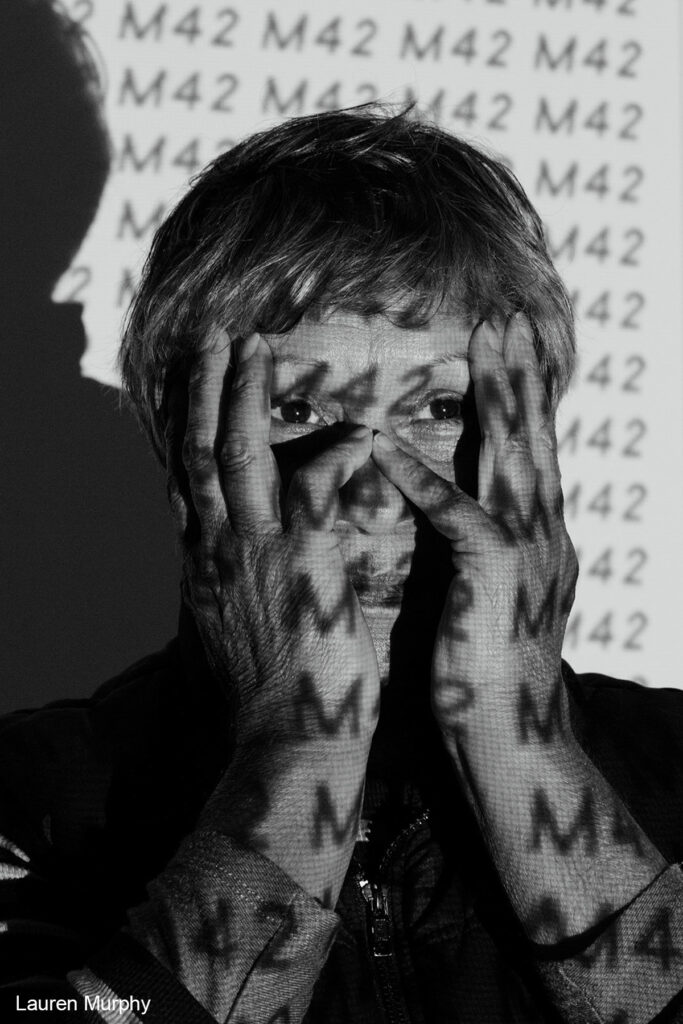
Lauren Murphy
Two separate snippets of hairs taken generations apart have allowed Kurnai Elder Linda Mullet to trace her ancestors lineage to where she stands today. The identified M42 mitochondrial DNA showing her ancestors travelled out of Africa and along the coastline of Asia towards Indonesia, whey they founded the Aboriginal population here. The Aboriginal Heritage Project is a unique database allowing the reconstruction of comprehensive genetic map of Aboriginal Australia but is not without it's contention among family members who share that genealogy is passed down from each generation as part of custom and culture.

Lisa Murray
"I recently turned fifty and it felt like a big number but after surviving heart failure and breast cancer – one near death experience for each of my children – I know that any number is a gift and there is beauty in all stages. In celebration, my family gave me a new camera and a dear friend surprised me with some beautiful flowers, which I tried to make look vital and vibrant throughout the decomposition process. To me they looked like they were dancing well into the night, which is what we all hope to do in life. This image forms part of a larger body of work entitled ‘Through my Child’s Eyes’. The series is a photographic collaboration between mother and son. It spans eight years and chronicles a chapter of time when new life and near death momentarily sat side by side. Archival image credit - Griffin Murray-Johnston, 2014. (5Yrs)"
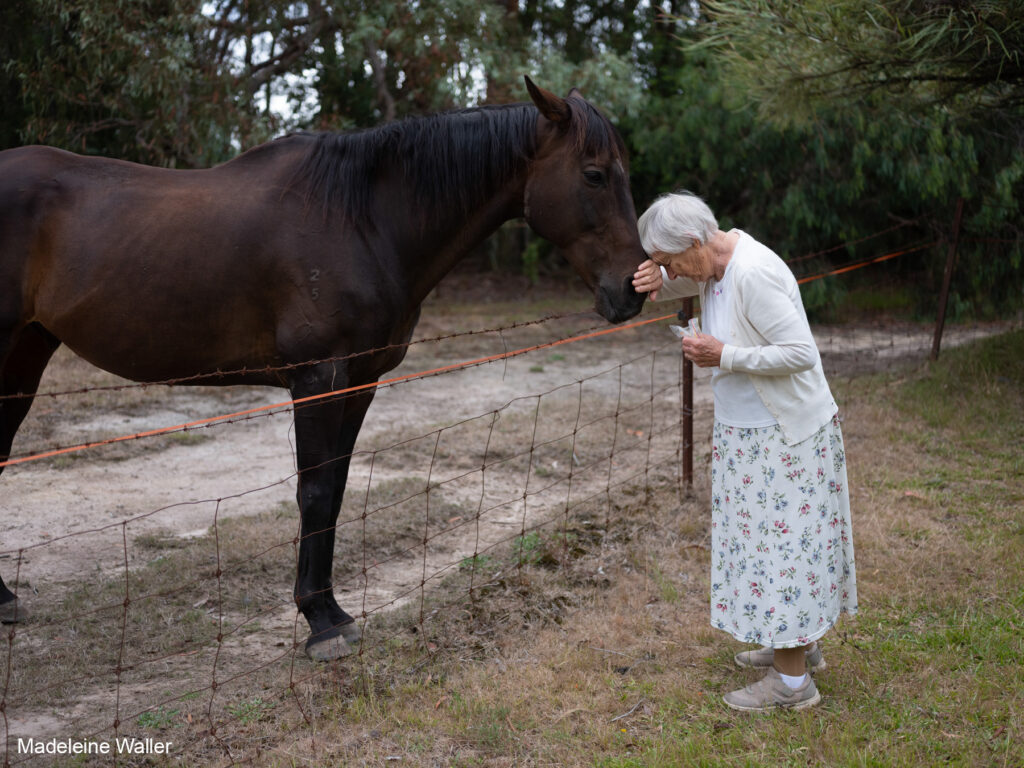
Madeleine Waller
"“When people come to visit, then leave I feel very sad, those people are going back to loved ones. I’m on my own. This set of portraits is an insight into my mother’s life and aims to highlight the loneliness a lot of older people experience. I live in the UK and she lives in Australia, this recent visit was the first time I had seen her in over four years. She walks every day to feed a retired race-horse Bugsy. He runs across the field when he sees here coming. I feel sad, seeing so little of her. I worry about her ability to look after herself as she gets older. I hope this series of portraits shows both her vulnerability and her resilience."

Mariana Zilbershteyn
"My portrait of mum was captured in the backyard at her house in Melbourne. It has been her home for the past 43 years. Ever since we migrated to Australia. The yard is a place she takes pride in. Often spending time feeding the birds or sitting and pondering life and the many personal tragic losses and difficulties she encountered throughout her life. This portrait documents her exhaustion, defiance, strength and resolve to persevere for the sake of her children."

Mikaela Martin
My husband's grandfather, Jesús was a farmer. He grew up in The Dominican Republic before moving to the USA when he was 19. Now 94, he still spends most of his days in his South Florida backyard, harvesting fruits and herbs (and making traps for the local stray cats). In recent years the green has been thinning, and the soil is now dry. This place feels special to me too, and I have long wanted to photograph him it.

Renée Stamatova
This is my aching desire for deep connection. I strip myself down; the body our most primal tool for communication. I’m trying to get out of my own way. Shot to ballads of love and loss, its title derived from a Velvet Underground song. A private diary made public, accepting what has been and what is. Dynamics of love, hate, ambivalence, nurturance, and the hope that follows surrender, lick the image surface. Simultaneously exuding vulnerability and acceptance of the ever-changing seasons of this life. I’m looking for a girl I used to know, though I realise I can never truly be her. This work forms part of an intimate examination of a time, and the ways we construct and destroy identity.
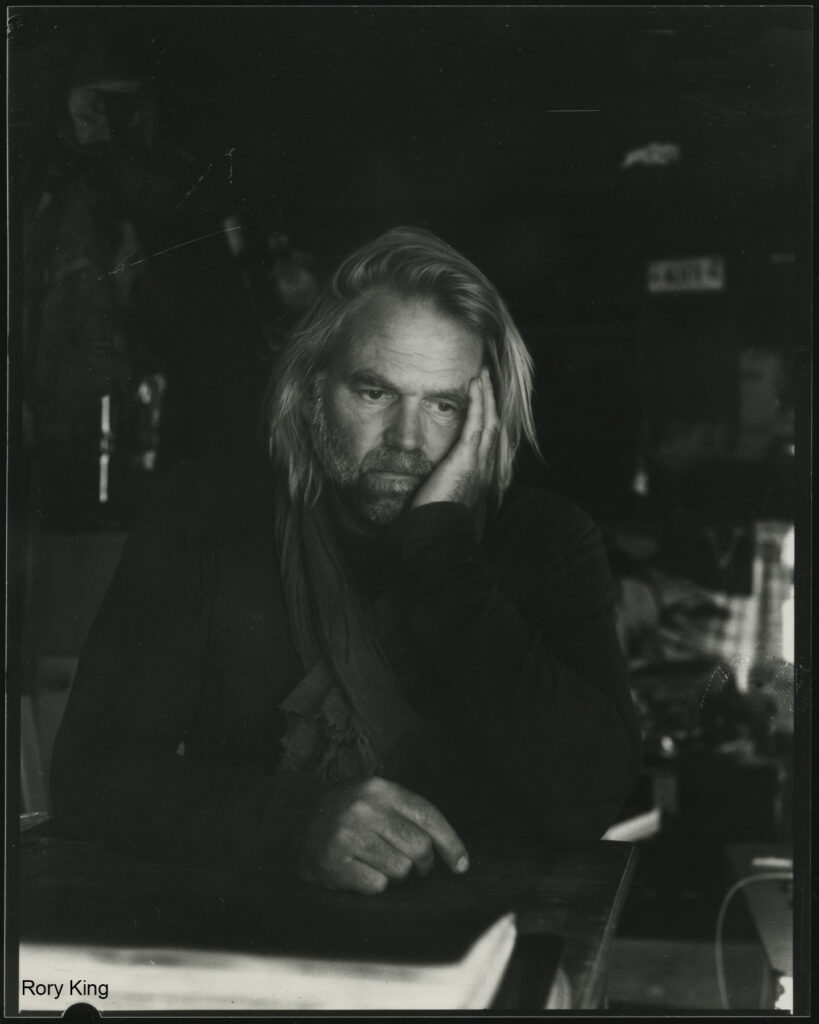
Rory King
"“Photography is a gift. You don’t take photographs, you’re given them.” This sentence introduces you to Stephen Dupont’s website - a preface above his artist biography. In the context of conflict photography and the photojournalistic work he is known for, this sentiment is unsurprising. The world unfolds with both volatility and serenity, suffering and joy, compassion and conflict and the photographer bears witness, not explicitly ‘taking’ photographs but instead receiving them, transmuting experiences into pictures. In the lead up to this particular moment, Stephen and I had spent the past hour sharing stories and making photographs at his home on the east coast. This was the last picture we made that afternoon. Whilst looking at the negative in the darkroom, I immediately felt this portrait expressed something elusive and yet profoundly powerful about the impact of the work he has made over the past three decades. In 2007, Stephen was the recipient of the W. Eugene Smith Grant for Humanistic Photography for his ongoing project on Afghanistan and the 2010 recipient of the Peabody Gardner Fellowship for his work in Papua New Guinea. He has been commissioned twice as an official war artist for the Australian War Memorial in 2012 (Afghanistan) and 2013 (Solomon Islands)."
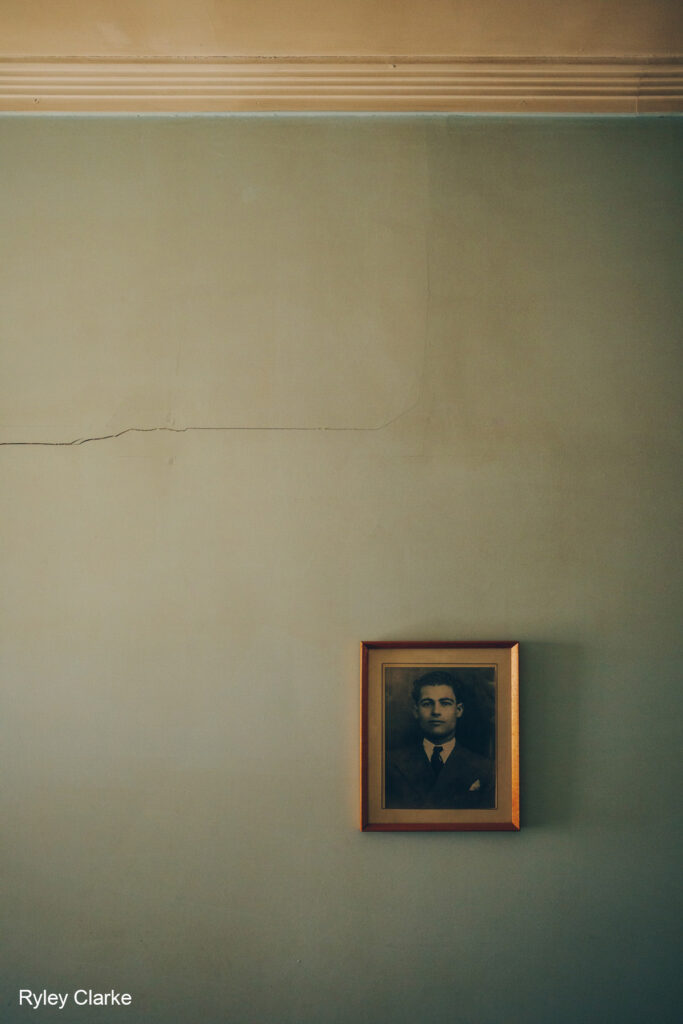
Ryley Clarke
A few months ago, my mother sold her childhood home. It’s been an overwhelming and exhausting journey to clear the place. Originally built by my Great-Grandfather and Great-Grandmother, over time it has quietly decayed away. Once loved, the dust took over, books, unopened boxes, and hoarded objects filled the rooms and hallways. Restoring a place that is filled with so many memories, bright and dark, melancholic and vibrant, has tested my mother’s perseverance. Despite that, in the midst of a pandemic, the devotion I witnessed to give this home some kind of new meaning in its next life has made her true strengths shine. And I couldn’t be prouder. Focusing on the process, transformation and experience of clearing and restoring my mother’s childhood home, we encounter familial possessions once thought lost, and reminisce about moments from here and there. Observing the relationship of the human condition, time, family and place Off the Well-Worn Path seeks to connect the past through observations of inheritance and regeneration.
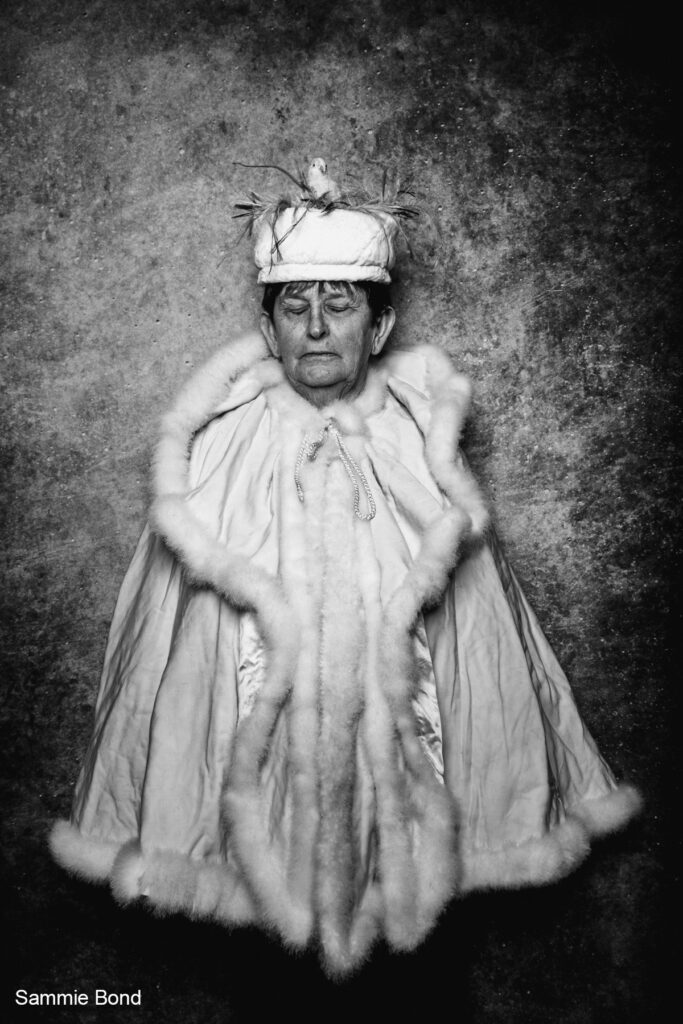
Sammie Bond
Underland is a body of work which references the ways in which taxidermy was incorporated into 1800s Victorian era fashion. It draws inspiration from 19th century fashionistas, who wore dead animals on their hats: decorating them with bird wings or even whole bodies of dead birds, as well as mice, and snakes. This roadkill couture was made commercially popular by thousands of upper-class women who wanted dead animals on their headdresses. By the late 1800s this bizarre fashion trend was banned due to the impact bird hunters had, killing millions of wild birds, leading many species to near extinction.
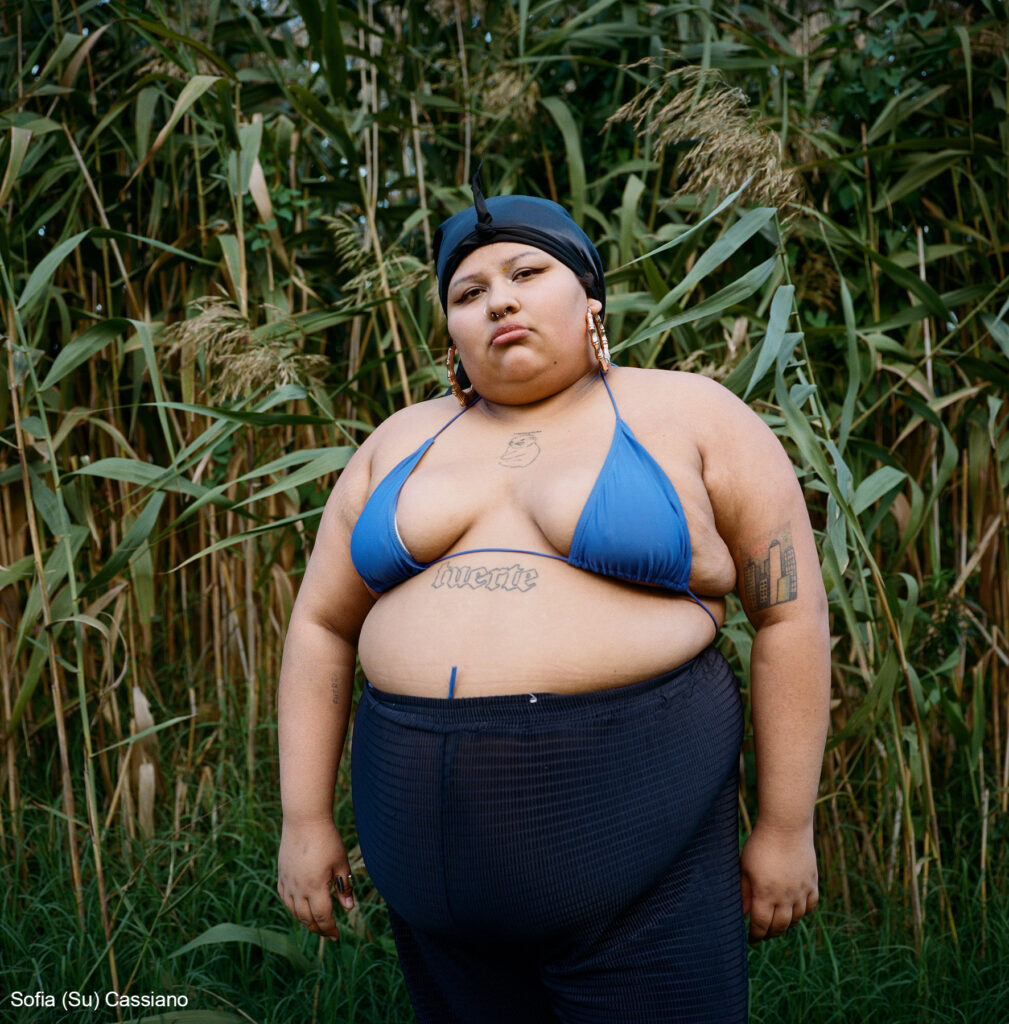
Su Cassiano
"Chichi is a queer trans Afro Latina spiritualist and DJ from Adelaide who recently moved to Melbourne with their best friend. They spend their time connecting to their boveda (ancestral altar) and putting tracks together that highlight afrolatin diasporic style that were played on vinyl as a child. They ‘reclaim being Mesoamerican Indigenous and West African through fashion that is written off as ghetto when worn in the white Australian landscape.’ “Being neurodiverse and mixed is a complicated experience but sound soothes me, reaffirms that as I walk on the earth it’s because my ancestors walked before me and they live through my feet and my crown”. Chi Chi"
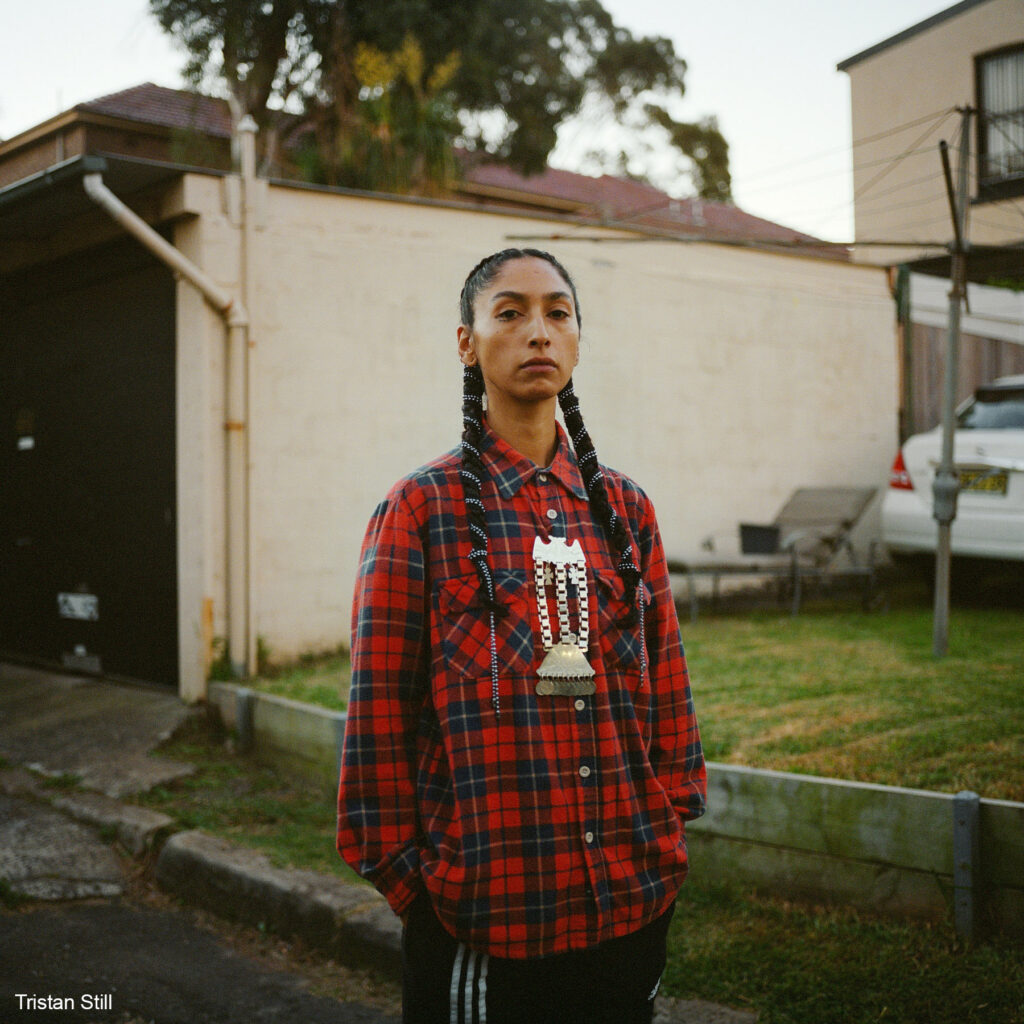
Tristan Still
"“I was going to be named Macarena, but I was born dark skinned. Dad didn’t like that, but it’s his fault mum says. So she named me after him. I’m a First Nations world-inhabitant. Yeah Dad’s blood runs thick with quanta, still Mum’s half but her Nation is stronger. The people in charge thought they were right when they smacked language out of her 6 year old mouth. But we learning it now, to speak and laugh and love from inside of it. Mum carries the world in this way, clutching between survival and when moments allow - curiosity. I hope to too.” Fernanda is a proud Mapuche woman and also a descendent of the Diaguita-Calchaqui nation. She was born in Santiago de Chile and raised in south west Sydney."
Environment

Aletheia Casey
This work is a very personal reaction to the climate emergency, in particular to the Australian fires which almost destroyed my family home. Although we have not experienced the ferocity of the 2019/2020 bushfires this year, the threat is ever present. This work uses my own archival images, and, through painting, scratching, and reworking, reimagines the landscapes of my childhood home, now with the threat of environmental devastation. The interference of my brushstrokes on the prints became a mirror of human intervention in nature, my own hand attempting to control the uncontrollable.

Alli Harper
This image is from my series "Yuki no Kuni"(Land of Snow). Siberian winds traverse the Sea of Japan creating a “wind of white flowers” (kazahana 風 花 ). Snow blankets the fields; summer’s toil is suspended. A muffled quietude, a portent perhaps, descends over the land. The snow bestows its gift of transformation. This absence of humanity is an illusion; life has merely turned inwards. The mundane has become beautiful.

Cathy Ronalds
From the series There Used To Be A Canopy Here, expressing grief over the impact of the storm that ravaged the Dandenong Ranges ridgetops on June 9th, 2021. Prior to the storm at this site, it felt an earthly coliseum of trees surrounded this great granite boulder locals call The Rock. Locals say it was once a meeting place for Wurundjeri women, though no one has evidence to support this.

Christine Goerner
The colour, tone, and texture of man-made fixtures in the environment are just as interesting to me as wildly colourful abstract aerials. This small dam is located on Anna Creek Station, in outback Australia, the largest cattle station in the world at 24,000 square kilometres. This aerial perspective shows the dam surrounded by tracks, claypans and trails created by the weather, wildlife, and man in a barren, but beautiful landscape.

Connor Henderson
For 8-10 weeks a year, the Casino Sunflower field comes alive as it blooms. I had very little photography experience and a very small window of opportunity to get a photo at this incredible location, and remember being disappointed when we arrived quite late into the afternoon. I got my setup ready and got my shot, and completely fell in love with the canvas my camera instantly painted.

Damien Drew
A bridge slices through densely forested mountains in Shikoku’s Kochi prefecture. Some Shikoku residents consider such large-scale infrastructure to be Government ‘vanity projects’ intended purely to project a modern and progressive Japan. Such projects fail to connect and inject prosperity into aging communities but rather highlight the increasing decline of Shikoku and the absence of opportunities for young people. These large highways and bridges link regional 'shutter' towns where up to 50% of the homes and businesses now stand empty due to depopulation. These houses are known colloquially as ‘akiya’ (empty house). The Japanese Government has recently incentivised the purchase of these homes to encourage young people to return to regional areas. In some cases, homes are offered conditionally ‘free’ to young couples if they remain in these towns for a given period of time.

EJ Hassan
It is eco anxiety or relief I experience when I look at this photograph of my son and the wind turbines near Jindabyne in NSW? It doesn't seem fair that he has been gifted the burden of saving the world. I watch and listen in awe as he speaks about the environment; where we have gone wrong, that it is time to change, time to understand, time to learn and teach and time to reflect on ones’ commitment to sustainability. It is time to learn to view the world holistically, breathe biophllia and wake up to be the voice for the future generations to come.

Glenn Lockitch
Shot from a helicopter, whilst photographing for the anti-whaling marine conservation organisation, Sea Shepherd. We were on the way back to our ship, the Bob Barker, after trying to track down the Japanese whaling fleet illegally operating in the pristine Antarctic environment. The Madrid Protocol, governing the protection of Antarctica, is due to be renewed in 2041. There are serious concerns for the future of the Antarctic environment.

Gloria Salgado Gispert
"Blue days and childhood sun “Estos días azules y este sol de infancia” We are back in the Mediterranean, the place that saw me grow up and where now I struggle to see beauty. The truth is that I don’t see it anymore. With this series I want to go back to my childhood years, when I was in love with everything about it. I simply need to grow old with this place fondly in my heart; it’s not easy after growing up hearing endless complaints about its changes. However, these later years of my life I have finally had the chance to experience this place for myself. As I sit by the shore I reflect back on my childhood here; memories of a place full of love, and endless sunny days when I learnt to always look into the light and engage with the world as it is. La Guardia Pilosa, July 2021. “Estos días azules y este sol de infancia” were the words written on a paper found on the jacket of the Spanish poet, Antonio Machado, on the day of his death in Collioure (France), February 22, 1939."

Jason Perry
Captured this shot while taking a test shot for a panorama. The Milky Way overhead, a lucky meteor crashing the party, and the aurora firing up just behind Cradle Mountain made for some pretty amazing conditions. I could actually see smoke behind this meteor, and had just pressed the shutter a few seconds before it appeared into the scene. Meteor’s colors all depend on their chemical composition, so they can have several different colors as they burn up entering the earth’s atmosphere. I read that yellowish color ones contain iron. Always lucky to witness these things and the memories always stay with you, especially if your lucky enough to capture it in a photograph. Super grateful for moments like this.

Jason Reekie
I try to look back through time at this river I see, the Murray River, Dhungala to the original custodians of this area. The banks have moved, the water flows and the trees grow and die, so the river is the same and different at once. This is how os see that passage of time and changes- a shape, a form, but the features are blurred and indistinct.

Julie Kenny
This image depicts a pair of emu footprints crossing a salt lake. You can observe the loss of definition in the tracks and the emus crossed a softer section of a lake, revealing the dark mud below the salty crust. While drone photography has enabled us to capture landscapes using newer technology, it is important to acknowledge that this perspective has been documented by Aboriginal people for thousands of years.

Melissa Drummond
I live in a mining town, where the earth has been dug up and redeposited, forming new topographic features. This image is from a popular location just out of Kalgoorlie, often used as a backdrop for family photos, or a place to cut up tracks in a 4WD. The man-made hills are old tailings from a mine that were treated with a cyanide solution to extract the gold in a process called heap leaching.

Michael Garbutt
This is a photograph taken from inside a car wash, looking out through the glass at sunset. As a stand-alone image, I was drawn to the interplay of light, reflection and the unusual sight of grass pressing against the glass. The image also sits within a broader context, a body of work about our detachment from the environment within the sprawl of suburbia.

Nicole Cleary
In the constant struggle of saving the environment and people needing to earn money to live, there has been a quiet battle going on in the South West of Victoria near the South Australian border. Pippi fishers have had to adjust their practices in an effort to keep the world safe for the hooded plover amongst other seabirds. After a court battle that has gone on for over ten years, with relevant departments referring the matter between them with no end in sight, these fishers have found a way around the vehicle on the beach ban- they bought themselves some ex-trotting racehorses and modified the racing sulkies to help haul the 100 kilo daily catch limit over the dunes. The horses wait patiently on the beach while the men kneel and sit in the shallows, digging for the pippis with gloved hands. The shellfish burrow down deeper, not wanting to come up to the blinding daylight. On the way back to the float the fishers walk behind the buggies to ease the burden for the beasts, who seem to enjoy their daily brisk trots on the large flat foreshore.

Odell Harris
"Multiple 'footprints' appear as pockets of air rising back to the surface, a visual tell of the scramble these surfers made to avoid being cast ashore. I LOVE sharing the world beneath, the moments most are oblivious of happening. The texture of sea water as it explodes on route to land...that... I could gaze at and study for an age. There's always a risk trying to capture images beneath the surface, become caught in the motion of a wave or the out going tide, at the mercy of the sea you become. It’s void of land noise but every noise of nature is amplified, roars, whooshing and the occasional laugh of a dolphin as they evade the lens and humble your swimming ability. What a place!"

Patrick McCoy
"A car lies abandoned in what appears to be a wasteland. Broken and forgotten, just like the landscape in which it resides. It's hard to believe that the now skeletal soils once nourished one of the most fertile forests in Australia. Environmentalists call it a 'scar'. Locals reflect on it's dark but pertinent history. The local government once considered cutting down regrowth to preserve its moonscape like appeal. As tragic as its history and impact on the environment was, it put the town on the map. Yet the prospect of lush forests seems like a faraway reality. However nature is resilient and is capable of regenerating after the most catastrophic of disturbances. It was in this past generation that we lost this land to human exploitation, but it will be in this next generation where we will see a great wilderness again."

Rosie Lang
"It has been over a decade since the devastating Christchurch earthquake of 2011, yet ramifications from the natural disaster are still evident and now intertwined with the urban fabric of the city of Christchurch. The visual dip in this otherwise linear old jetty, represents the dip and stagnation within the timeline of the city, leading up too and following the moment of disaster. City life as normal was knocked off course and time stood still during national grievance and urban reconstruction. Eventually business as usual commenced, the city building back better in consideration of a new collectivised experience and trauma. I captured this 150yr old jetty using Kodak portra on my Fujica SLR, just weeks prior to its demolition and subsequent replacement, against support from local residents to repair the old structure"

Serena Dzenis
"Has the thought of living in a world without seasons ever crossed your mind? Seasonal changes affect everything on our planet and living organisms all need a special combination of factors to be able to thrive. Although we’ve come a long way with technology, the human race still isn't at the stage yet where we can control these factors on Earth. This concrete batching plant may be evidence that we have figured out how to harness raw materials in order to survive but as it stands, we are currently unable to establish a new colony elsewhere in the Universe. For now, we can only dream of building a life in another world."

Tim Wrate
"This devastated moonscape was once a thriving 280 square km freshwater Melaleuca swap. A deadly combination of rising sea levels, introduced feral water buffalo population and changes to the annual cyclonic patterns has seen a once thriving ecosystem invaded by salt water. The hyper-salinity caused by the saltwater inundation has strangled the life and fertility from the landscape. Climate change caused saltwater inundation is the biggest threat facing the vast freshwater billabongs and swamps across Northern Australia."
Documentary

Bronwen Caple
"In a pre covid-19 era, Gang Of Youths were quickly soaring to new heights. Coming to the crescendo of another epic show, with front man Dave Le'aupepe and all his magnetic charisma loving nothing more than getting amongst his people, who enthusiastically support his every move, while belting out the lyrics to Magnolia. 'Show me the way Ah, show me the light Hey, I'm drunk, but I'm ready To kick some ass tonight""

Darrian Traynor
"After the COVID Pandemic changed the world as we knew it in 2020 there was wide spread optimism in Australia for 2021. It was hoped that the introduction of the COVID vaccine would end the lockdowns and ease restrictions on our lives. Compared to the rest of the world Australia was seen as one of the lucky countries in terms of infection rates and death during the global pandemic. While the vaccination process was slow to start with in Victoria the goal of reaching 90% vaccination of eligible people soon became more than a dream as the majority of the population took part in the rollout. However anti lockdown groups turned to anti vaccination groups and continued to protest the Victoria Government and its vaccine mandate as well as new pandemic legislation. Union protests the vaccine mandate for job sites were taken over by conspiracy theorists, far right and neo-Nazi groups. These groups would take to the streets and continue their fight through 2021 even though the lockdowns ended. In my role as a stringer/freelancer with Getty Images I was asked to cover the rolling protests and civil disobedience that took over the streets of Melbourne in the later part of 2021. Keeping in contact with journalists across all media and other photographers I needed to be immersed in all the protesters plans and movements. Using encrypted messaging apps to monitor the groups intentions was also required. Safety is always a concern when working as a freelancer at rallies/protests. I needed to be constantly aware of my surroundings while still staying focused on producing strong images. Knowing that some staff photographers with major mastheads and T.V. cameramen were supplied with personal security I found it wise to keep a close eye on these guys in case I was ever in need of support. After being physically assaulted during one day of the protests it was fellow photographers that came to my aid. I was also helped by my fellow photographers after being sh

David Cossini
On September 9th Broken Hill’s Broken Heel Festival woke to the sad news that the beloved Queen Elizabeth II had died aged 96. Gina Vanderpump surveys the news of the beloved monarchs passing while Indigenous drag queen Mama MadB along with Drag veteran of 42 years, Dame Liz Taylor, & Lexa Pro take a quiet moment to relax ahead of their performance later that evening. The Broken Heel Festival is a tribute to the cult Australian movie and drag classic “Priscilla Queen of the Desert”. It’s held annually amongst the roaring, red dirt and splitting blue skies of Broken Hill, deep into the heart of the Australian Outback.

EJ Hassan
I sit on the beach watching the chaos. There is a lot of watching these days as you grow older, some talking but mostly watching you navigate the world and your surroundings. You lean over me. I can feel the heat of your sun kissed skin. Leo scurries past as he escapes the lead. Your brother dives for him, kicking sand into my lap. It reminds me of our early beach days, as I would scurry after you both.

Condemned homes in Lismore
Artist Antoinette O’Brien lost everything in her home and studio in South Lismore after a record breaking 14.4m flood devastated the town of Lismore in February this year. Antoinette and her 8-year-old son are now displaced as their home is deemed uninhabitable. On the night of the flood, the warnings for the flood were inaccurate and Antoinette thought they’d be safe on the mezzanine level in their home. The quickly rising flood waters left them no choice but to escape through the roof. Her friend had a blunt machete to cut through two sheets of corrugated iron and they sat on the roof in the freezing, cold rain until they were rescued by boat hours later.

Helene Cochaud
Image from a Project Documenting Fairfield NSW, Fairfield Scene. Driving down a busy suburban Fairfield street one afternoon, my eye is caught by a person sitting in a large tent in their front garden working on something. Curiosity gets the better of me and I need to find out more. I am fortunate that Ramzi, an Assyrian from Iraq, is kind enough to have a chat and offer a coffee. As I open the rusted gate I see the garden is strewn with an assortment of metal offcuts and other recycled materials. Going in closer I notice what look like religious decorations illuminated by LEDs. Walking around suburban Fairfield I have noticed many such decorations displayed in residents' houses and gardens. Ramzi produces a variety of decorations such as crosses, angels and stars, which he gives away when completed. First he draws out a shape, then makes a frame to bend the metal around and lastly he puts on the LED strips. Each one of his creations are made with patience, skill and thought.

Hilary Wardhaugh
Between 1997-1998 I used to work for The Canberra Times and The Chronicle doing advertising photography, which required me to dive around the region every week. During this time I noticed a proliferation of roadside memorials. I took my Mamiya RZ 67 with me in the boot and took a polaroid whenever I saw one. I revisited these memorials twenty years later in 2018. The memorials are still there after 20 years and I do wonder whether or not people drive by and actually notice them, now? Are they a source of comfort or profound grief?

Houman Katooz
This photo is of our 4th child, Kyro. He has an extra chromosome and attends weekly therapy sessions to keep up his development with a typical kid his age. Kyro brings a lot of joy to our lives and this is a sweet little moment I was able to capture between him and his incredible therapist.

Jared Drennan
Just days before France's third national lockdown was imposed, protestors gathered in numbers to show their frustration and anger over the enforced restrictions on their daily lives. The Gendarmaries are notorious for using their military powers to shut down protests and force people off the streets, however in this photo we see a different side, a moment of calm and contemplation between the guards before the inevitable hysteria begins.

John Janson Moore
"Two teenaged cane croppers, Tyson, 14 and Blaze, 17, stare out over burning fields of sugarcane at the end of season’s harvest, just outside the small town of Mossman, in Far North Queensland, Australia. Local cane croppers, some as young as 12 years old, burn fields at the end of harvest, to rejuvenate the soil in preparation for the sowing of the next crop. This year, the sugar cane industry has been hit by unseasonal rains across the dry season - over 250mm last month alone - a result of the La Niña weather cycle, which has drenched the east coast of Australia. COVID-19 has also impacted the cane industry as the workforce shrinks due to virus. This labour shortage means longer work hours for already pressed rural workers, such as these cane croppers. Truck drivers and tractor operators are now being sought from overseas to help fill the gap. Despite this, the industry is looking to the future to produce cane not just for sugar, but also for the new ‘low carbon’ economy, as a source of biofuel and biodegradable plastics. For the next generation, like Tyson and Blaze, the viability of the entire industry relies on the success of this kind of forward-looking diversification. Otherwise, the very survival of towns like Mossman is at risk."

Julie Kerbel.jpg
"I recently documented a barmitzvah, where the barmitzvah boy’s grandfather, Jack, who is now 70, was present. Just six weeks before his barmitzvah in 1965, his father tragically passed away and just over a year later, he lost his beloved mum. He was sent off to boarding school and was not much connected to his community after that and had absolutely no recollection of ever laying tefillin in his life. In short, tefillin consists of two small leather boxes attached to leather straps, each one containing four sections of the Torah inscribed on parchment. One of the boxes is placed upon the left arm so as to rest against the heart - the seat of emotions and the other is placed upon the head, so as to rest upon the cerebrum, directing attention to the mind, body and spirit. It is a ritual that has been observed and treasured for thousands of years and is one of the most important ‘mitzvot’ in the Torah. It was incredible to witness Jack laying tefillin with his grandson and son-in-law for the first time that he can recall ever doing so - three generations standing together in shule, united by prayer. There wasn’t a dry eye in the women’s section and it’s little moments like this that make documenting life such a privilege."

Karoliina Kase
Joeys, who are brought into the sanctuary as orphans or who have injured mothers, need to be fed with milk. While younger animals, who do not leave the pouch yet, need to be fed every few hours, older joeys receive milk twice a day. The drink consists of milk powder, water, and vitamin supplements, if needed.

Kirsten Lyle
Making the choice to birth at home due to Covid restrictions in our local hospitals, meant this father could be the person to catch his first son. Their midwife stood by patiently, giving the couple space for the birth to unfold. Here you can see a moment of pause before the baby's body was fully born.

Lisa Murray
"Preparing for chemotherapy is brutal. The day I cut off my long, thick, youthful hair, I knew it would never return in the same way again. It was hard to say goodbye, but everything’s always measured against the alternative – dying - and it was easier than dying. This image forms part of a larger body of work entitled ‘Through my Child’s Eyes’. The series is a photographic collaboration between mother and son. It spans eight years and chronicles a chapter of time when new life and near death momentarily sat side by side. Archival image credit - Griffin Murray-Johnston, 2014. (5Yrs)"

Matt Hrkac
Being predominantly led by women, following the death of 22 year old Mahsa Amini (also known as Zhina or Jina) and others at the hands of Iran's 'morality' police, thousands of people in that country have been taking to the streets in defiance of that country's dictatorship and taking a stand its morality laws that dictate how a woman must dress or carry herself in public. Acts of defiance include women removing their hijabs as well as cutting their hair. Similar actions standing in solidarity with the Iranian protests have been taking place around the world. Similarly, in Melbourne, several rallies have drawn thousands of people from mostly the Iranian dysphoria in support of the Iran protests. This image was taken as one woman stood before a jubilant crowd and used svuzors to cut off her hair.

Mattia Panunzio
Eight hundred kms north of Adelaide, in South Australia, a small town stands in the Outback: Coober Pedy. Its name comes from the Aboriginal term kupa-piti, meaning “white man’s hole”. The town is arid, flat and the heat can reach 45° in the shade during summer. It is home to 1500 people and the majority of them live in underground homes called dugouts. These excavated hollows in the sandstone offer residents a respite from the extreme conditions. The reason they exist is the same reason the town exists: opal mining. The image is a view of an Opal field in the area.

Mellen Burns
"Ivvy at work. This image is part of a more extensive collection of images and audio recordings of skimpies in Kalgoorlie-Boulder. The largely undocumented tradition of lingerie bartenders is specific to mining towns in West Australia and has a history spanning back to the 1970s. Their role - to serve drinks, entertain and provide companionship to people who work long hours in physically demanding shift work, away from their support networks for long periods. Often, media fueled controversy surrounds the work of skimpies, particularly in the wake of the #metoo movement. I wanted to give a voice to the 'girls' - the women behind the profession. Each has their own story and motivations for working in this industry. The friendships, the money, the comraderie between the women they work with, the travel perks, and the satisfaction of providing a friendly face and an ear to listen are commonalities in each woman's story. You can listen to them at soundcloud.com/nophotosofthegirls."

Natalie Grono
Friends Ivy, Bean and Gracie explore the flooded streets of their hometown, Lismore. On 28 February 2022, the most significant flood in modern Australian history inundated communities of the Northern Rivers of NSW. The disaster resulted in a loss of lives, livestock, homes and livelihoods. In the following days and weeks of the disaster, the mammoth clean-up task began in hot and humid weather. Thousands of homes were left uninhabitable, and entire towns were enveloped in thick dark mud and a heavy gut-wrenching stench. To start with, the task of stripping premises and cleaning streets was met solely by the residents and volunteer mud armies as wearied communities awaited defence employment. One month later, many flood-affected residents were again evacuated. Another severe weather event hit the Northern Rivers resulting in putrid flood waters inundating their homes and destroying their businesses for the second time in weeks, traumatising many people and leaving many on a relentless flood watch.

Nuri Ayyildiz
My name is Bader Ahmad Hammoud, I’m a 21-year-old Lebanese Palestinian who currently lives in Turkey. I'm a kid who's been on the run for most of my life due to family instabilities, every couple of years we moved countries to start a new life all over again or to pick up what we left behind I eventually came to Turkey after leaving UAE where I had a moment of life or death, it was a moment where I was all alone at the age of 20, dead end job, horrible living conditions and deteriorated mental health I was suicidal and knew I had to yet again drop everything behind and start anew I chose Turkey, where I've been given a second chance, or the 7th chance perhaps In this photo, I was homeless, sleeping from house to house, with my stuff everywhere I raised up a budget to record a music video, but with a lot of help from my friends and people I newly met, I was able to finish up a project that I've only been planning for in 2 weeks, from start to finish This photo is the day of the shoot, the day where I felt like nothing but miracles and fortunate events were happening, a moment of cathartic release as an artist Where I learnt to "Do, then think." I later on went to release my first Full length album In accordance to "Do, then think." And in that photo, after all was finally done, now came the time to think

Sara Maiorino
For the past year, I have been photographing women and non-binary people in homes in Mparntwe/Alice Springs and having conversations about our collective experiences of labour in the home. We talked about being overworked, about our emotional, domestic and logistical organising capacities being run dry, how we are beyond tired, how our work is invisible and how, despite this, we are raging and organising. Our relief in discovering each other, at consoling, supporting and organising with each other is paramount to making it through a life. This tableau image is a tribute to the people who are a balm to these aches, an image to make the invisible visible, and a reminder to all of us that there is work to do.

Stuart Miller
Lenard "In the Shadow of the King" Connolly, a Wiradjuri, Yuin and Ngunnawal man, steps out for his performance at the Parkes Railway Bowling Club, as part of the annual Parkes Elvis Festival. Each year, tens of thousands of Elvis fans descend on a regional Australian town, tripling its population – and flooding it with tribute artists. In Parkes, just about every venue in town gets into the spirit. Pubs, RSLs, bowling clubs, the local football stadium and street corners are taken over by performers doing their best baritone. It is a festival beloved by all who experience it, but the weekend really belongs to the tribute artists.

Tebani Slade
Catania, Sicily At first it’s the smell that hits you, then as you turn the corner, there it is. Rubbish bins overflowing with garbage. The heat and humidity of summer only adding to the decaying odor. It wasn’t what I expected to see in this town. As we moved into the city from the tourist area on the coast, which is clean and tranquil, the scenery slowly deteriorated. According to locals, political and financial issues obstruct the regular rubbish collections in local areas while the tourist spots are maintained and kept pristine, just to keep up appearances.

Yu Pang George Chan
Photo taken on 22/5/2022 in Aberdeen, Hong Kong. In the middle of the night, several fishing boats braved the storm to fish with seine nets in the rain. Known as “Kwu Tsai”, it’s one of the major fishing methods you will find in Aberdeen. When introducing Hong Kong, people usually start with: "Hong Kong was once a little fishing village..." In the last century, being the most important shelter for local fishermen, the Aberdeen Typhoon Shelter was once crowded with thousands of fishing boats and houseboats. Time has changed, the stenchy fishing village has now become an international city; the fishing industry has declined, and you can barely smell the taste of salted fish in Aberdeen now.
Animal

Chris Freelance
This assassin fly was poised on the unopened head of an allium flower. Despite being delicately poised on the flower, assassin flies are voracious ambush predators that will leap into action and grab prey - smaller flying insects - out of mid-air. The monochrome nature of the photo really highlights the texture of the different parts of the insect and of the allium on which it is perched.

Christine Ward
I came across this curious Torresian Crow at Archerfield Wetlands. It was very quiet that day and I had been hoping to see several species, so at first I was thought, "ah well"... but then this lovely creature decided to fly in. It sat on a nearby branch and wondered what I was up to. It was about 5 metres away and was cocking its head to the side, out of curiosity. Then after a few seconds it left. Even though the encounter wasn't very long, it still made my day because it felt like there was a little connection. Even though this Crow looks scary to some, all I see is an inquisitive crow!"

Christine Ward
I decided to head to Minnippi Parklands with a friend on a cloudy afternoon to see if there were any Black Swan babies at the lake. This place is known to have the same breeding pair nesting at the lake every year for a while now. Over the years they've lost a few babies to predators in the lake, such as eels. Unfortunately, that is how nature is. This time however, my friend and I discovered that the Black Swan pair had nested on the bank rather than in the lake. I wonder if it was purely out of protection due to the loss of previous babies, or if there was any other reason. Fortunately, the pair had five babies with them, feeding on the grass shoots along the lake. They all seemed very happy and the parents seemed very proud of their little ones. A slight drizzle started to come down and I noticed one of the babies stretching out, looking like it was enjoying life.

Don Silcock
The American crocodile is a cousin of the fearsome and very dangerous Australian salt-water crocodile, but... its reputation is that it will not attack in the water, so it is considered relatively safe to be in the water with. This image was taken in August 2022 at Cayo Centro at Banco Chinchorro in south-eastern Mexico, near the border with Belize.

Emma Parker
A sunbird takes a drink from a vibrant red flower in Borneo, creating a dramatic photo opportunity. I was actually confined to my hotel room when I took this photo with covid but luckily was isolated away from others with a patio so to pass the time I set up my cameras at two flower points that seem to be the most visited by sunbirds and waited. I was fortunate that the female sunbird decided to literally choose the flower I had set my camera to two hours later and I was able to capture this shot. This was one of my favourite birds to see in the wild in Borneo and a joy to watch

Ian Bickerstaff
Mvie is a female western lowland gorilla who lives in sanctuary in Cameroon. She was orphaned 20 years ago by poachers, when she was a baby, being dropped off at the sanctuary in a cardboard box with a second gorilla of a similar age, who is very likely to be her sister, and is named Nyume. Mvie and Nyume live in a family group of 6 individuals and the two of them are mostly inseparable, however in this moment Mvie appeared from out of the bushes in their enclosure on her own and perched on a water tap to get a better view of her caregiver approaching with a wheelbarrow full of food.

Kathleen Wilton
Despite being colour blind, cuttlefish also have highly sophisticated colour-changing abilities. The more than 120 different species of cuttlefish are usually solitary animals and can be found in oceans all around the world. While most live in shallow waters, some species can be found at depths of more than 3,000 feet.

Matt Palmer
A young quoll hides in a log. It is illuminated by a flash through a gap in the log. The flashes were tested around these quolls in such a way as to determine whether they were made uncomfortable by them, before taking any photos of the quolls. They were not bothered by the flashes at all and are used to humans within their environment which is for a breeding program.

Matt Ramsay
At a local park I had been hoping to capture some behaviours and interactions of the water birds in the pond but it clearly wasn't show time and after a while I decided to move on, as soon as I moved I heard a splash, I looked over to see the water moving but nothing there, I thought to myself whatever that was has to come up for air sometime, sure enough a few seconds later this Eastern Water Dragon emerged from the water, climbing up this partially submerged branch, covered in Duckweed. It stayed there for sometime, not moving at all, being August the water must have been cold however, Eastern Water Dragons are able to tolerate lower body temperatures than other dragons and can stay submerged for up to an hour. Had this particular dragon not moved when I did I would never have seen it.

Matthew Bagley
As the sun rises, The light and shadows drift down to the darkness of the sea floor. It's the last of the outgoing tide, so the coral creates a milky haze. Reducing visibility but allowing light to reflect on the water particles, creating bands of light and dark shadows that clearly divide space. On the ocean floor sits the HMS Protector, a memory of the forgotten past slowly disappearing and becoming one with the coral reef. Awaken by the sunlight, a green sea turtle slowly drifts between light and the darks of this world, disappearing from sight. These two figures are vastly different, but both battle against time to be remembered. The ridged steel form of this man-made structure is only a relic of what it once was. The Green Sea Turtle is endangered, with a 90% population decrease over the past half-century. Both fights to survive. It's a snapshot of the present, a clear reminder of the past, with the uncertainty of your future. What will we take from this world? Shot on a single breath dive, 2-3m deep, natural light.

Robbie Goodall
"Peacock Spiders (Maratus gemmifer) Maratus gemmifer is found south of Perth - Western Australia. Its name means "bearing gems" because the flaps of the male's brilliantly coloured opisthosoma each have a bright, gem-like spot that can only be seen when they're unfurled. It's a member of the species group based on Maratus mungaich, which all have similar colouring. The male peacock jumping spider must dance for his life. In order to woo a female and avoid being eaten, he performs an intricate dance using a brilliantly colored fan attached to his abdomen. If the female approves, he is allowed to mate. If not, he becomes her next meal."

Rosie Richards
This image is of my late grandmother, Maria. The family is taking part in our annual tradition of making passata. No longer able to take part due to dementia and Parkinson's disease, she is seen sitting in her garage observing her family. It is a tradition which she brought with her when she migrated from Italy in 1956.

Salvatore Gambacurta
When i saw this clingfish, it immediately drew my attention. The lighting made the beautiful tiered petals glittering along the edges, lining the whole fiesta and creating a magical contrast with the clingfish on top of the blooming pedestal. It was like finding a precious treasure experience.

Salvatore Gambacurta
It was at the top of my bucket list to see and to capture the image of this famous Mantis shrimp, known by the notoriousness of its punch and its eye sight which has trinocular vision. The encounter for me was an extraordinary experience, to witness a Mantis carrying eggs at the end of my dive. Seeing the detail of the Mantis and eggs' beady eyes, all staring back at me, like being observed with troupe of hundreds eyes, watching every moves I made as I watch them back, such a mesmerising moment that I was lucky to seize.
Experimental

Aletheia Casey
This work is a very personal reaction to the climate emergency, in particular to the Australian fires which almost destroyed my family home. Although we have not experienced the ferocity of the 2019/2020 bushfires this year, the threat is ever present. This work uses my own archival images, and, through painting, scratching, and reworking, reimagines the landscapes of my childhood home, now with the threat of environmental devastation. The interference of my brushstrokes on the prints became a mirror of human intervention in nature, my own hand attempting to control the uncontrollable.

Aletheia Casey
This work is a very personal reaction to the climate emergency, in particular to the Australian fires which almost destroyed my family home. Although we have not experienced the ferocity of the 2019/2020 bushfires this year, the threat is ever present. This work uses my own archival images, and, through painting, scratching, and reworking, reimagines the landscapes of my childhood home, now with the threat of environmental devastation. The interference of my brushstrokes on the prints became a mirror of human intervention in nature, my own hand attempting to control the uncontrollable.

Arrayah Loynd
"My brain doesn’t hold memory Not much anyway What memory there is is fragmented disjointed Something that I can’t quite touch But leaves me feeling confused Frustrated and overwhelmed My brain doesn’t work in a linear fashion It shoots off into a million different points at once Stretching me thin and exhausted I see fragments of words spoken And feel moments of deeds done They hold me down and hold me back Like a child I fold into myself Disorientated as to what is real and what is not Told to be good Be still Be silent This world is not for the likes of me I can try and negotiate but it makes no difference I am frustrated and frustrating Ask anyone I am not who they say I am I am not who you think I am I am no one and nothing I am everyone and everything So come and find me But only in the small moments when I want to be found I make no promise that I will be there _______________________________________ My brain doesn’t process thoughts and feelings very well. It struggles to separate things, gets them all tangled up and leaves me exhausted. Being able to express myself visually/creatively becomes a burning need. It brings a sense of relief from extreme emotions and physical sensations that I don’t always understand. It helps me to unravel the coil in my belly and the burning in my mind. From my ongoing series ‘Come and Find Me’, this image reflects the place in my mind where trauma and memory converge. It is the place within me that simultaneously experiences pain and peace. It Combines multiple images from a near and distant past and the continuous blending and erosion of pixels until I arrive at the visual embodiment that is the confusion of my mind."

Arrayah Loynd
"My brain doesn’t hold memory Not much anyway What memory there is is fragmented disjointed Something that I can’t quite touch But leaves me feeling confused Frustrated and overwhelmed My brain doesn’t work in a linear fashion It shoots off into a million different points at once Stretching me thin and exhausted I see fragments of words spoken And feel moments of deeds done They hold me down and hold me back Like a child I fold into myself Disorientated as to what is real and what is not Told to be good Be still Be silent This world is not for the likes of me I can try and negotiate but it makes no difference I am frustrated and frustrating Ask anyone I am not who they say I am I am not who you think I am I am no one and nothing I am everyone and everything So come and find me But only in the small moments when I want to be found I make no promise that I will be there My brain doesn’t process thoughts and feelings very well. It struggles to separate things, gets them all tangled up and leaves me exhausted. Being able to express myself visually/creatively becomes a burning need. It brings a sense of relief from extreme emotions and physical sensations that I don’t always understand. It helps me to unravel the coil in my belly and the burning in my mind. From my ongoing series ‘Come and Find Me’, this image reflects the place in my mind where trauma and memory converge. It is the place within me that simultaneously experiences pain and peace. It Combines multiple images from a near and distant past and the continuous blending and erosion of pixels until I arrive at the visual embodiment that is the confusion of my mind."

Carrie Jones
There is a pivotal moment that occurs, when our descent to the darkest of places ends and because we are forever in motion, there is an upsurge, it can happen in a split second, so fast that we often miss it. We begin to rise to the surface, leaving the darkness behind, gasping for that new breath, the new beginning.

Chris Byrnes
This is a multi constructed photographic based negative converted in photoshop for this image. Layers are a cliche verre drawing, a paper pinhole negative on washi film, and a photograph of my glass light 3D photograms squashed to a 2D surface. This is a digital copy from the negative not yet realised in other alternative and experimental processes, lith printing, salt printing, cyanotype plans. These are all work in progress.

Chris May
"Today, a litany of social customs and practices dominate our behaviour. I view them as contemporary taboos and social norms that seep into the everyday. On a societal level, some norms are considered best unspoken or whispered, lest we be judged and deemed outside the acceptable social norm. In the 21st century, they differ immensely from our earlier preconceptions of the taboo which ultimately derived from religious faiths and ancient cultures. Unlike the biblical origins they stem from, our modern day moral codes are far more subversive and sophisticated, leading us to question our place in an ever complicated society. In 1999 the advent of social media created a global stage in which our behaviours and actions are constantly scrutinised and judged leading many to isolate themselves and look inwards with sometimes alarming consequences, leaving casualty’s along the way. Who are the architects of these social norms? Who draws the line and makes these judgments? These new codes of life are communicated to us in digital visual soundbites – Fitting in, looking the part, gender identity, nutritional habits, mental illness and more, are all fast becoming our modern day taboos and social norms. They are not for me to judge but to document. I view them as codes of behaviour to be presented and deciphered in an abbreviated visual language that is just as abstract as the issues themselves."

Dani Pearce
In 2019 I was diagnosed with a chronic illness. In 2022 I was awarded a grant (ArtScreen - funded by the MCA & Accessible Arts) to direct a work of video art about my journey through the medical system. During the process of making the film, I had to cast an actor to play myself. My relationship with the actor, Gemma, was fascinating. She was me, and I was her. I decided to take a series of photographs of her portraying me - this is the image that most closely represents who I am when I am unwell. She is me, and I am her. This is a self portrait.

EJ Hassan
What are we when we are not a mother, what were we before and what are we afterwards? I use self portraiture and abstraction to examine my own experience of motherhood, of my twin boys born in 2009, simultaneously to understanding what is to be mothered. By sitting in this space for long periods of time I am able to reflect and document my being and reconstruct this through collage and layering; the process is reminiscent of my lived experience.

EJ Hassan
What are we when we are not a mother, what were we before and what are we afterwards? I use self portraiture and abstraction to examine my own experience of motherhood, of my twin boys born in 2009, simultaneously to understanding what is to be mothered. By sitting in this space for long periods of time I am able to reflect and document my being and reconstruct this through collage and layering; the process is reminiscent of my lived experience.

Ilsa Wynne-Hoelscher Kidd 2
I created this lived moment as a vertical diptych, a continued breath cycle from one shot to the next as a sequenced action on a roll of film. To me there's a sense of inhale; an embarking search for meaning and connection, a subtext between two who idle in seemingly their own but also a shared dream-state. Then comes the exhale; an observation more fluid as if a wash of understanding and surrender to letting something be. This work attempts to communicate the depth of the unseen ties between a mother and child. To pull focus to the unspoken dialogue throughout the seasons of life that hum along these ties - the letdowns and triumphs, the lifelong sentence to one another's existence and the fears held by a mother of outcomes not in her control. Presented vertically not dissimilar to a full length mirror, acting as a reflection to the viewer of a universally felt or known narrative.

Ilsa Wynne-Hoelscher Kidd
A process I often find myself revisiting across all genres I work in, is in-camera multiple exposures. I prefer to manually rewind the film, inviting the camera to play part in the narrative created within a frame. The final composition in its fortuitous landing is unknown until the film is developed, which to me represents a true collaboration between photographer and process. This openness in practice evokes through its imagery space and an invitation to delve into its layers - different for each viewer. However at the same time captures a moment and a story that cannot be replicated in exactness and this almost binds interpretation within its visual structure. This multiple exposure portrait demonstrates this tension between reality and playful process, and leaves me wanting to say less about its specificities in order for it to say more.

Jayde Burnett
"This image is apart of my series 'Portfolio', a body of work which uses photography to describe my love of colour, and how it infuses our everyday lives. These still images utilise commonplace products to illustrate the ways in which different colour schemes can be used to evoke an emotional response in my audience. Colour theory plays a large role in photography and design, and in our lives. This work centres the complex and varied ways we are able to perceive colour, and the intentional way it can be used to manipulate a consuming public, particularly as an advertising tool. I rely on colour as a compositional device, using black, white, and flat backgrounds, allowing the product to be the focus. I have employed the use of coloured gels to create a wide range of effects that enhance the product colour. 'Portfolio' encompasses a period of studio-based discovery - over the course of creating this work I have been able to observe how even the smallest adjustment of lighting, colour, and composition have enormous effects on the final image. I have always loved the way colour can be a communicative tool, and 'Portfolio' is only one in a larger practice which centres this."

Kaede James Takamoto
Exploring the never-ending oscillation and the visual unravelling between the stories we’re told and what is understood within our own identities. Kaede James Takamoto’s constant exploration of identity as a Japanese Australian and the impacts of family, history and generational trauma through immigration has lead her to reading letters written to her by her father, these letters often omitting certain memories or reveal his own interpretation and experience of events. Kaede examines how moments in our past often interact with each other, and created an incomplete, imperfect yet complex construction of who we are; the beautiful flaws of memory. This work uses the letter and childhood photographs as a starting point; interacting with archival images, photographs taken around her childhood home reprocessed through different ways or recreated images from her own memory or those of her family Kaede explores the materiality of memory and the unclear and unique way we remember moments from our past with different sensory explorations.

Kelvin Lau
The last time I visited my grandfather's grave at the cemetery was sometime in the 1980s. It was surrounded by rose bushes, and my mother would refer to it as the rose garden. This year I returned to visit him for the first time in over 40 years. The rose bushes were gone, all replaced by camellia hedges that bloomed over his headstone. Placed at the stone was a wilted arrangement of supermarket flowers in a rusted sliced peach tin. The other plots around his own shared similar floral gifts within jars from pasta sauce, instant coffee, and strawberry jam.

Kris Anderson
In Greek mythology, the nymph Eurydice was married to legendary musician and poet Orpheus. Eurydice died from a snake bite, sending her to the Underworld. Overcome with grief, Orpheus sang and played such a sad melody that the gods implored him to seek Eurydice and bargain for her return. His song touched the heart of Hades, who allowed Orpheus and Eurydice to leave together, under one condition - that Orpheus walk in front of Eurydice, and not look back until they were both at the surface. When Orpheus reached the light, fearing he'd been tricked, he glanced back at her - only to see Eurydice immediately pulled back to the Underworld forever.

Krystle Ricci
Still life exploring my family’s history with addiction and my fear of the gene I carry within, a secret waiting for the right time to germinate. As a horticulturist, I grow all the flowers for my still life photography. I feel I have a better understanding of my subject as I watched them struggle to develop. I understand the way a stem bends from the wind and how essential elements for life can also be destructive, like watering, it often spreads disease and compacts soil. It all shows up in the final image. Gardening provides me with a link to my ancestors and has been passed down through generations, much like addiction.

Kylie Owen
Palmoxylon or Fossilised Palm wood is an extinct type of palm found around the world. These date back to the late Cretaceous, around 83 Million years ago. I have a fascination for rocks, minerals and gems and have recently started experimenting by taking macro shots of the specimens I have collected over the last 35 years. This particular specimen has always intrigued me with it's details and colours.

Lilli Waters
"Offering a nuanced mix of hope and despair, promise and foreboding, this photograph was created during a lockdown reprieve in mid-2021, when Melbourne residents thought they were at last free from government restrictions. While invoking a sense of entrapment, this series invites the viewer to move beyond the darkness and towards the light. We are living through an age where our lens on the world must constantly shift and refocus as new ideas, crises, social movements and the natural environment rapidly changes. A level of poetic consciousness is required to navigate this new world and at times hopeless landscape. Orpheus was a poet, a prophet and a musician in Greek mythology who at the end of his life worshipped no god but the sun. For these images, I wanted Orpheus to be a woman who is glistening oracle-like, asleep on a dark landscape. The viewer is invited to embrace their own mortality and energy for change simultaneously. To dare to be one’s own illumination—like a transient point of light in a night sky."

Lisa Murray
"Walking the gender diverse road with my eight-year-old, who has recently made a transition in pronouns. Looking back at the road travelled it all makes sense to me now. I have no idea what lies ahead but I recognise happiness when I see it. ‘Since I’ve been true to myself, I feel like I’ve unlocked a superpower inside me’ Essi, eight."

Luke David
"Growing up in the closet, I only ever let certain parts of myself show through. I felt like I was made up of 3 parts. The one I revealed, the one I let myself feel, and the one that was secret & unknown. I would reflect only certain parts of myself back to others. I tried to merge seamlessly into my surroundings. Like a mirror, keeping everything hidden behind the surface. As an adult I find myself adopting the same patterns. Segmenting myself and only revealing those parts that fit. Alone and making images in the landscape, I feel free of it all. There is nothing there but me and it."

Maria Palacios
This image comes to life as a reflection on beauty ideals and the harmony between beauty and ugliness. Exploring the idea of a disruptive beauty, a beautiful ugliness, in a world where we are constantly bombarded by highly-edited imagery which imposes itself as the ultimate standard on how things and humans should look in order to be beautiful.

Minami Ivory
"How Do I Bury You If I Don’t Have Your Body? My intention is to exhibit the journey from clinical, sterile IVF treatments and the initial pain this causes, to the overwhelming grief and pain of miscarriage and finally the expectation to move on and not come to terms with grief through a series of self portraits and still life. Infertility causes great pain. Conceiving and giving birth to the child how and when you want to seems like a dream. Imagine if you didn’t have to give excuses to people about why you are not having a baby at that time. In the IVF lab, embryos are counted, graded and numbered like samples. They are stored together in the cold, dark and quiet room at night, having nothing to say. After every treatment, I would look and worry about every little symptom to see if I was still carrying that embryo. Or is that baby already dead? Maybe It’s already left my body. The train of thought continues day by day, night by night until the clinic rings up for the test result. During the IVF treatment, I felt emotionless, isolated and exhausted. How long was this dark tunnel going to continue? The unsettling thought of wasting away my defrosted embryos made me shiver and mortified after every single negative result. The aim of the journey became just to get to the end of it, not to carry the child. The journey became so painful that I just wanted it to be over."

Monica Renaud
"An experimental photographic study has created a new Cosmos to dream into. Splatters and marks on spent baking paper resembles the interior of a stellar cloud. The outcome, an abstract black and white image, blurs the lines between an analogue and digital process. Scale renders the subject matter unrecognisable. star/dust : a dreamlike or fanciful quality, yet also the billion-year-old particles from space with which all living organisms are made. “We are Stardust”, all intertwined - within Nature, and to each other. No high-end telescope was required to create this body of work, simply a suburban oven. I am driven to make and to push my medium, from home amongst children, as an Ode to Mothers and their beloved offspring, in honour of daily domestic ritual and to the Beauty and Power of our shared, Mysterious, Magical Universe."

Muhammed Berjaoui
There are times where you find yourself exposing too much of your heart, leaving it vulnerable, causing nothing but grief and pain. You lead a life trying to keep it sheltered, close to you, in order to avoid the hurting. Just know that there is a dedicated mender of hearts, who will delicately put all of your broken pieces together.

Owen Hall
"Part of my continuing landscape series based around the word Petrichor - the smell of rain. As an image, it looks to try and create the same sense as what we feel, when we smell that specific earthiness just before a big rain, and along with that, the other many many associations we have with the promise of rain in this country of ours. Accompanying this image is a poem, created in the same manner as the image - Boy it began to rain like a bastard, The stinging pain Like barbed wire across gullies Plunging through leaves It feels wonderful"

Phoebe Tran
"Using experimental approach to distress and partly destroy the negative, the image responses to the violent change in Aboriginal landscape and habitant of Naarm after the European settlement. Its abstractive element also challenges the traditional visual representation and character of documentary photography. The busy and famous Elizabeth street of Melbourne CBD was constructed on top of William Creek. The constrain water flow has caused repeated serious flood issue over the years. Image was taken with medium format camera on colour negative film."

Rebecca Croft
"She lives in an apartment high rise were the four-wall are her sanctuary and prison. The openness makes her feel trapped. She’s incapacitated with fear. What she sees below is a blur of anguish and unease. She yearns to dispel the panic. And still dreams of unlocking her minds walls."

Ryley Clarke
Searching for a relationship between remembrance, time, love, loss, and belonging, Ryley weaves together the imaginations of his ancestors and his photographs to recall upon the self, lineage, and memory. Using the camera to retrace the fragments of his introspective and familial identity, past and present moments entwine to reflect upon his youth, adolescence, and his connection to those dearest to him. Gazing between then and now, a dream space where emerging memories and narratives unfold, lost and buried memories resurface. Spaces, objects and environments reveal themselves. And familial relations begin to form new meanings and relationships. In pursuit of nostalgia and connection of the past, A Hanging Branch Connects Us contemplates how we structure ourselves to belong within the world and to understand the present. Narrating the fragility of our memories, ancestral tree and the self, the work comes to an understanding that our identity continually evolves as an entity, living in the past and present.

Taylor Parham
An exploration into the accidental aesthetics that exists in spaces built with form and function as a priority, exploring an idea of art intersecting with science and vice versa. This image documents a space unseen an unfamiliar to the majority of the public. One of only a handful of cyclotrons in all of Australia, this particle accelerator produces radioactive isotopes for use in medical imaging, treatment and research.

Trent Mitchell
"This photograph from my series Inner Atlas, represents the intersection between one's consciousness, the physical world and the natural metaphysical space we occupy. When these shifting worlds align in perfect synchronicity I feel most alive. Being close to the sea in a kinetic state and immersed in sunlight heightens these moments for me. In a dream-like universe where fear and joy are co-creators. Inner Atlas explores man’s primordial relationship with the rhythms of the sea, and in a broader sense sunlight and water, our essential lifebloods. In an ode to the mythical fountain of youth, the series recognises the importance of our metaphysical relationship with nature and the restorative effects these connections can have on the human condition."
Student

Cassidy Medwell
With The Reef comes from the documentary series Great Ocean Sea. The series explores the beaches of the Great Ocean Road that are well known for human activities that may take place along them, long hot days lying in the sun and beach cricket. The sand along these picturesque beaches we call home, although in the foreign salty water, should we also have as much authority. Great Ocean Sea is a series created by Cassidy Medwell, a photographer that likes to focus on the non-human activities that take place and how we can better reevaluate our way of living to support these delicate ecosystems.

Connor Henderson
For 8-10 weeks a year, the Casino Sunflower field comes alive as it blooms. I had very little photography experience and a very small window of opportunity to get a photo at this incredible location, and remember being disappointed when we arrived quite late into the afternoon. I got my setup ready and got my shot, and completely fell in love with the canvas my camera instantly painted.

Connor Henderson
Byron Bay whale watching has been amazing throughout 2022 so far with countless pods travelling by the most early point of Australia. I was following these two beautiful whales with the drone for around 20 minutes as they enjoyed the final couple hours of the day, and was lucky enough to the get this incredible heart-shaped spray before returning.

Cullen Butters
This photograph is taken from 'waterworks / wodociag' and depicts Maria, whose story was the subject for my series. Standing with an all encompassing presence in her backyard of 40 years, Maria who travelled from Poland in the early 1960's stares with agency into the barrel of the lens. Arriving to such a foreign place, connection to culture, family and land became apparent for Maria. At the time there were extended family members in Hobart, however she did not feel the true sense of place until she created a family in Dynnyrne, Nipaluna/Hobart. Overcoming hardships like that of language, faith and the harrowing bushfires of 1967, in which she barely escaped with her life, her infant child and unborn child. Maria was able to cultivate a life for herself and generously gave her time to her community. The process of welcoming me into her world was gradual but one that I understood must take as long as it needed. Originating from a knock on her door to find out if I could photograph the creek that runs behind her house, a whole world opened up in that moment. Maria was fascinated with my Pentax 67 camera as it reminded her of her late husband Peter, with that curiosity came the parallel of the process of film and the gentle progression of our friendship. With isolationism becoming more and more common in our society, the life lessons and rich stories can easily become lost. Connect with your neighbours, archive your seniors stories and give permanence each individual.

Davina Jogi
Portrait of my father, Shasekant Jogi, at a site for a housing development he worked on, near our home in Harare, Zimbabwe. Born in Rhodesia in 1947, he has spent the majority of his life as an urban planner dedicated to developing the built environment in Zimbabwe. Despite his Indian heritage, he has never set foot on the subcontinent. The image is part of a series investigating my own identity as a culturally diverse African immigrant living in regional Australia.

EJ Hassan
Thirteen. I remember a wise mother further ahead in her motherhood journey telling me years ago to grasp onto every single moment I share with you, as it could be the very last. At the time there were so many firsts, along with an exhaustion and love I had never experienced in my life. Today is the same, but instead of firsts, they are lasts. The last time you held my hand in public, the last time you said I love you out loud, the last time you wanted me to turn up the music and dance crazy. I cherish every single last and the thought that I still have five more Christmases with you.

EJ Hassan
What are we when we are not a mother, what were we before and what are we afterwards? I use self portraiture and abstraction to examine my own experience of motherhood, of my twin boys born in 2009, simultaneously to understanding what is to be mothered. By sitting in this space for long periods of time I am able to reflect and document my being and reconstruct this through collage and layering; the process is reminiscent of my lived experience.

Jason Perry
Captured this shot while taking a test shot for a panorama. The Milky Way overhead, a lucky meteor crashing the party, and the aurora firing up just behind Cradle Mountain made for some pretty amazing conditions. I could actually see smoke behind this meteor, and had just pressed the shutter a few seconds before it appeared into the scene. Meteor’s colors all depend on their chemical composition, so they can have several different colors as they burn up entering the earth’s atmosphere. I read that yellowish color ones contain iron. Always lucky to witness these things and the memories always stay with you, especially if your lucky enough to capture it in a photograph. Super grateful for moments like this.

Kaede James Takamoto
Exploring the never-ending oscillation and the visual unravelling between the stories we’re told and what is understood within our own identities. Kaede James Takamoto’s constant exploration of identity as a Japanese Australian and the impacts of family, history and generational trauma through immigration has lead her to reading letters written to her by her father, these letters often omitting certain memories or reveal his own interpretation and experience of events. Kaede examines how moments in our past often interact with each other, and created an incomplete, imperfect yet complex construction of who we are; the beautiful flaws of memory. This work uses the letter and childhood photographs as a starting point; interacting with archival images, photographs taken around her childhood home reprocessed through different ways or recreated images from her own memory or those of her family Kaede explores the materiality of memory and the unclear and unique way we remember moments from our past with different sensory explorations.

Leila Edelstein
The beauty of this duck caught my eye while walking in Warrandyte. Ducks are seldom portrayed as elegant. They are often relegated to second place behind the long-necked swans. This duck, however, was a worthy subject that drew my attention. It deserved to be depicted with intensity and anguish, having its magnificent form and texturally fascinating feathers under the spotlight. For me, the image describes a feeling, part soothing and part melancholic, that I can't quite manage to capture in words.

Letitia Green
The image is part of a series that explores an individual in her own domesticated setting, investigating the roles and impacts garments & accessories have on our personas and how they help mould our identity and connection to who we are- historically, culturally, sexually or emotionally. My series aims to highlight a nostalgic view to who we were, and who we are in present day and provoking thoughts of feeling unseen and unheard.

Luke David
"The harsh, dry landscape of the Australian Outback. Red sand, yellow grasses and stunted shrubs. I'm fascinated by the incongruity of flood drains under the long straight bitumen in this environment. The channel's dry red soil is bordered with vibrant green growth. Shrubs are uprooted and left to die following rare torrential rain's flash floods."

Luke David
"Growing up in the closet, I only ever let certain parts of myself show through. I felt like I was made up of 3 parts. The one I revealed, the one I let myself feel, and the one that was secret & unknown. I would reflect only certain parts of myself back to others. I tried to merge seamlessly into my surroundings. Like a mirror, keeping everything hidden behind the surface. As an adult I find myself adopting the same patterns. Segmenting myself and only revealing those parts that fit. Alone and making images in the landscape, I feel free of it all. There is nothing there but me and it."

Matthew McKay
Mary Burgess is one of the longer tenured artists in the long standing Nicholas Building located in Melbourne. Her Art form is weaving, in which spends most of her days working on her craft. Her mission, is too reuse and create long lasting memories for the people that come to her, utilises materials associated with past love ones to combine and create a new use for them. Turning clothes from a past father into a blanket for a new born. Mary established the term of "woven memories", a fitting description for the craft she shares.

MJ Bentley
Freed By Water' is a portraiture series of a young Australian woman in Melbourne. The series captures the cathartic process in which the model shared intimate details about her life with the photographer, MJ Bentley. The act of washing was an act of shedding the darkness. The model and MJ had not spoken prior to the photoshoot. They will always be connected by the experience of this series.

Oscar Heer
Mathematics books lie frozen in time in a school library in Pripyat, Chernobyl Exclusion zone, Ukraine. The city of Pripyat was evacuated after the Chernobyl nuclear disaster, and remains uninhabited to this day due to high levels of radioactivity. Before the accident, fifty thousand people lived in Pripyat, a town with modern facilities and well-stocked grocery stores compared to most in the Soviet Union. It was a young town, with an average resident age of just 26, built to house the workers, scientists, engineers required to operate the Chernobyl reactor, along with their young families. The decaying mathematics books present a cruel irony, left abandoned from one of the great engineering and scientific mishaps. | Nov 2019.

Phoebe Tran
Using experimental approach to distress and partly destroy the negative, the image responses to the violent change in Aboriginal landscape and habitant of Naarm after the European settlement. Its abstractive element also challenges the traditional visual representation and character of documentary photography. The busy and famous Elizabeth street of Melbourne CBD was constructed on top of William Creek. The constrain water flow has caused repeated serious flood issue over the years. Image was taken with medium format camera on colour negative film.

Phuong Le
Mr. Tuan inside his home garden in Sunshine. While having been in Australia for over 5 years, Mr. Tuan struggles with loneliness and often longs for his family back in Vietnam. He finds comfort in his garden where he grows vegetables native to his cooking back in Vietnam. The image is a part of the project "Sunshine". "Sunshine" portrays a western suburb of the same name, characterised by its Chinese-Vietnamese immigrants and nicknames like "Scum-shine" or "Stab-shine". Unlike its name, Sunshine unravels its issues: The intergenerational division of cultures, races and religions. I use photography not only as a method to document Sunshine, but also how I confront my outsider status in Australia. I am constantly reminded that I am 7000 km away from my home in Vietnam, in a suburb that disguises itself as home.

Prudence Bansemer
I have crafted the surreal landscape series 'We speak for the trees' to be reminiscent of the illustrated story of The Lorax by Dr Seuss – a lesson about greed and the environmental degradation which results from the endless accumulation of wealth. The series encourages viewers to reflect on how we – particularly those of us embedded in Western capitalism – view the earth as something beautiful for our consumption, but how continual consumption will result in the destruction of the beauty we admire. By linking my work back to a popular children’s story, I highlight the tensions of our contemporary world, where traditional markers of adulthood have shifted, leaving younger generations facing vast uncertainty. The desolate beauty of the landscape speaks to innocence lost and prompts viewers to ask themselves ‘What can I do differently to avoid this outcome?'

Rachel Clayton
"Judy Cannon had more energy in her 90s than most in their 20s. I came upon Judy while visiting an aged care home in Melbourne as part of my student folio this year. We talked for hours about her life, her husband who was a journalist before going to warm her children and her love of chocolate (of which she had a stash in her drawer that we shared over tea). I started this project to highlight the value older Australians have for just being them."

Sammie Bond
Underland is a body of work which references the ways in which taxidermy was incorporated into 1800s Victorian era fashion. It draws inspiration from 19th century fashionistas, who wore dead animals on their hats: decorating them with bird wings or even whole bodies of dead birds, as well as mice, and snakes. This roadkill couture was made commercially popular by thousands of upper-class women who wanted dead animals on their headdresses. By the late 1800s this bizarre fashion trend was banned due to the impact bird hunters had, killing millions of wild birds, leading many species to near extinction. Underland pays homage to my weird, wonderful, and bonkers family members who all share this bizarre imagination of a gothic fantasy land. This work is a component of the larger Underland series, an ongoing work which explores other aspects of the macabre through photography.

Sammie Bond
Underland is a body of work which references the ways in which taxidermy was incorporated into 1800s Victorian era fashion. It draws inspiration from 19th century fashionistas, who wore dead animals on their hats: decorating them with bird wings or even whole bodies of dead birds, as well as mice, and snakes. This roadkill couture was made commercially popular by thousands of upper-class women who wanted dead animals on their headdresses. By the late 1800s this bizarre fashion trend was banned due to the impact bird hunters had, killing millions of wild birds, leading many species to near extinction.

Spencer Nguyen
"A lifetime is a short time. We are here momentarily to leave our mark, or even better to leave a legacy. This photograph is of my new old friend Mr Peter Haffenden, with whom I've had the privilege to absorb a small portion of wealth. The wealth of knowledge and wisdom. These fleeting moments and our duty to serve the community are a constant reminder that the second count. Life is just not living without passion and reason. So with that said this photo is in honour of my friend, and mentor for living a life reinvented multi times over. The legacy of your generosity to the Inner West of Melbourne community shall not be forgotten."

Wing Hong Leung
Airports are places where realities and blurred dreams are intertwined. Humans often throw themselves into undesirable places at particular times, hoping to arrive some place better than the last. But where are we going? Or have we arrived? In the end we don’t want to be here, there, or anywhere. Anywhere but here. Any time but now. Maybe just somewhere else and some other time.
Junior

Callum Jack
When I captured this image I felt like I was standing on top of the world. I captured this image by setting up my camera and composing the shot then climbing up the 10 metre pillar of rock, I was lucky enough to be with my younger brother who I had told to press the shutter on my signal. The feeling of being up there was exhilarating and I feel that I captured what it feels like to be on top of the world.

Callum Jack
In this image, I used my drone to capture a surfer swimming into the depths. I had been walking on a beach with family, while we stopped I decided to put my drone up to get some images of the surfers. I captured numerous images but the one that stood out to me the most was this, with the surfer coming out of the wake of a wave the ocean's colour transitions from light to dark showing that he is going into the depths.

Callum Jack
At 3 am my dad and I got up to go on a photo expedition in Sydney. For a while, I had been planning to go on this trip and it was finally and it happening. Out of all the images I took that morning my favourite was this iconic image of the Sydney skyline. Displaying the Opera House and many upcoming skyscrapers, I love this image because of the story behind it and all of the beautiful colours it displays. My all-time favourite image I have captured of Sydney.

Darcy Etherington
Tigers are ‘Endangered’ with only 4000 left in the wild and only 7% left of their historical habitat remaining. This tiger was born in Dreamworld, Australia helping to preserve the species and increase awareness but equally I feel sad seeing any animal being exhibited and a tourism attraction. Humans must do better to conserve and protect all wildlife, habitat and our planet.

Edith Harley
I took this photo on mummy’s phone in one of Melbourne’s 2020 lockdowns. This is my mum and little brother and little sister, Lawson and Ivy. I have called this photo “It doesn’t look good in lockdown” because life wasn’t perfect. I thought lockdowns were sad and boring and sometimes I was angry. I was sad I couldn’t go to school and angry because I wanted to play outside. We missed out on birthday parties and spent all day just sitting on the couch. Lawson was born in lockdown so I couldn’t buy him a present when he was born and no one got to meet him. Mum was sad about that. I feel happy now that lockdowns have ended!

Essi Murray
I took this photo with my grandmother’s old-fashioned camera. It’s actually quite annoying I never got to meet her because she was Mama’s Mother and it would have been nice to see her, but I guess that’s how life goes. Why I took this photo was for the light, Papa and the river, Birrarung. I have lived here all my life and it’s a special place.

Grace Croston
I took this photo of a Pelican shortly before sunset on a warm December afternoon. While wandering around the beach I noticed Pelicans gathered on a dock. Camera in hand, I headed over to observe the birds. I was taking photos of this particular pelican when it stared at my camera lens, and I was immediately amazed by the beauty and harmony of nature contrasted with the human-made structure.

Sam Bayes
At first this Jawfish didn’t want anything to do with me at all, but after a while he started to trust me more, and after about 45 minutes he came fully out of his burrow. I feel fairly honoured to be trusted by a fish with its babies, it even had a burrow it could have hidden in if needed. The baby fish inside the eggs add a lot more detail to the photo too.

Sam Bayes
This pink curly nudibranch is a phyllodesmium poindimiei. This particular one was waving its head around to look for a new place to slither on, most likely to look for food. What I find amazing about these creatures is that they’ve evolved to look like the coral they use to camouflage themselves without even seeing it. This nudibranch and the way it was moving reminded me of the samba dancers in brazil, with their extremely bright and colourful outfits.




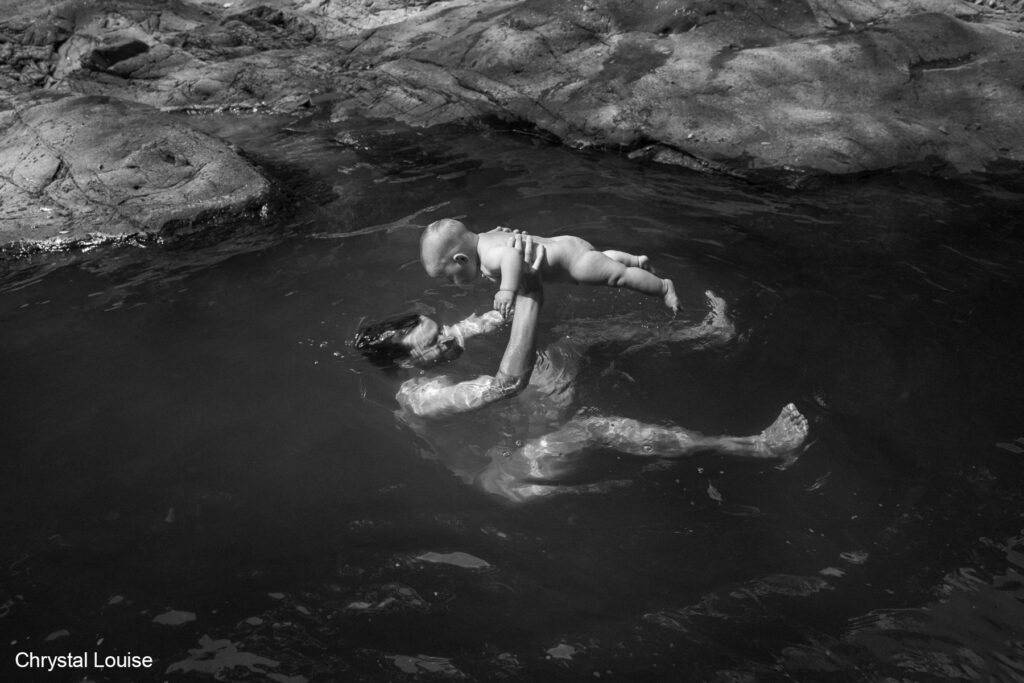
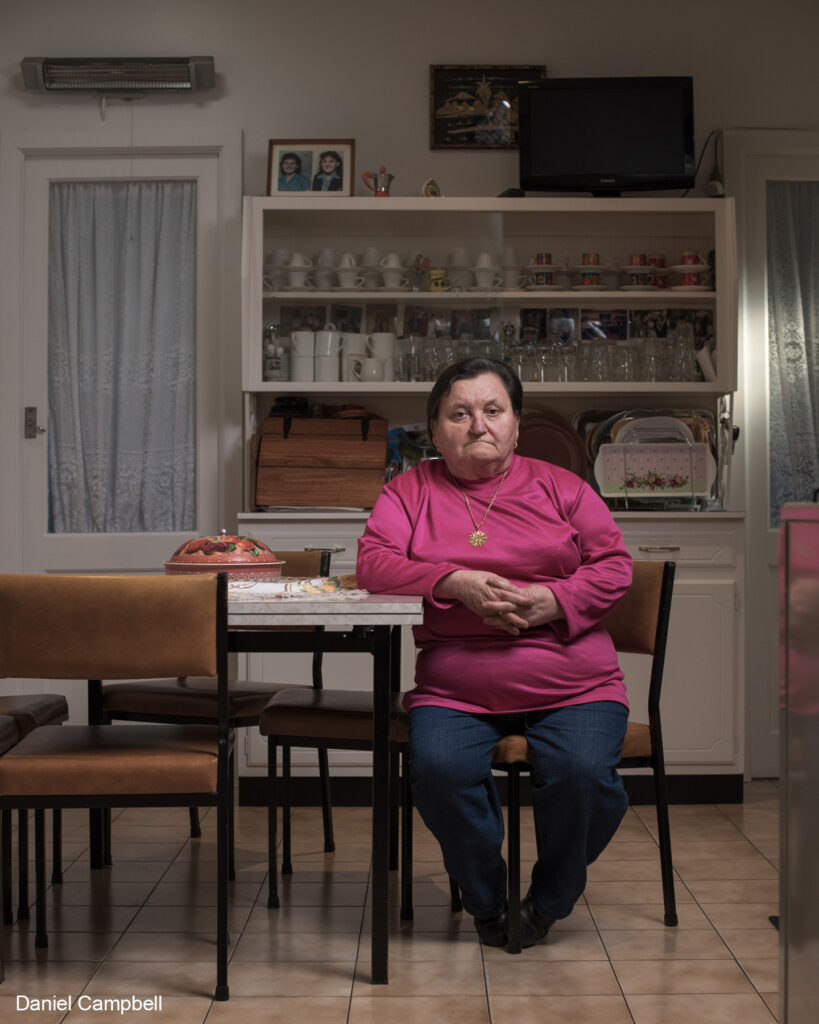
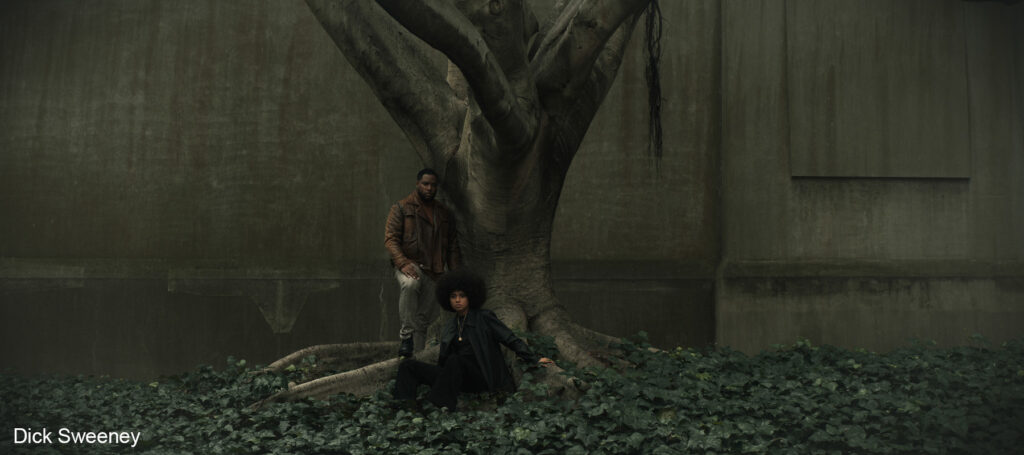
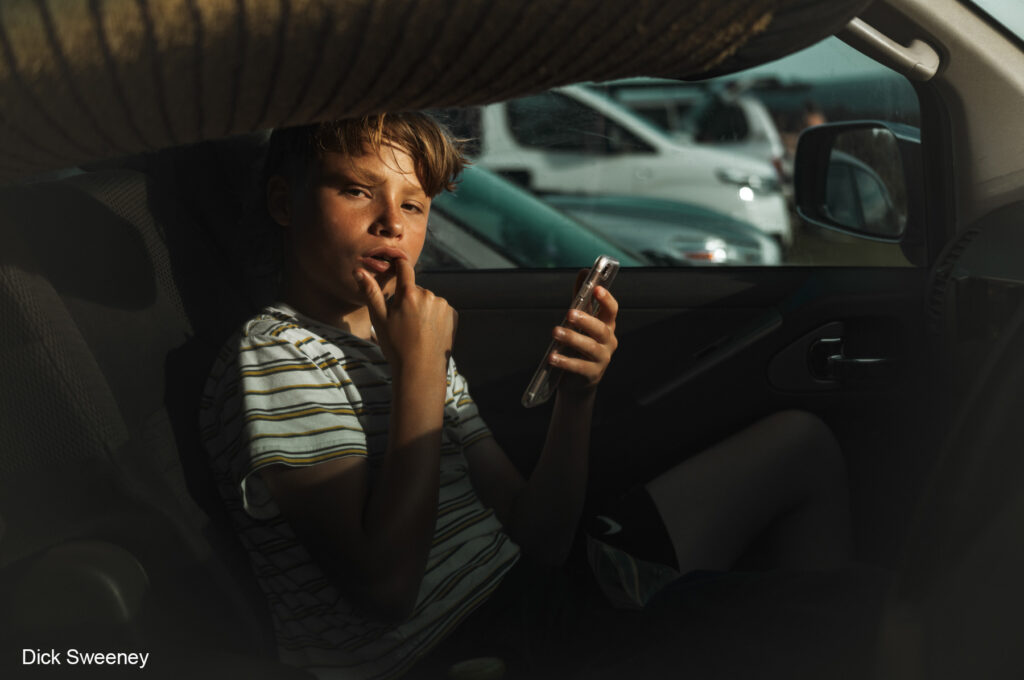
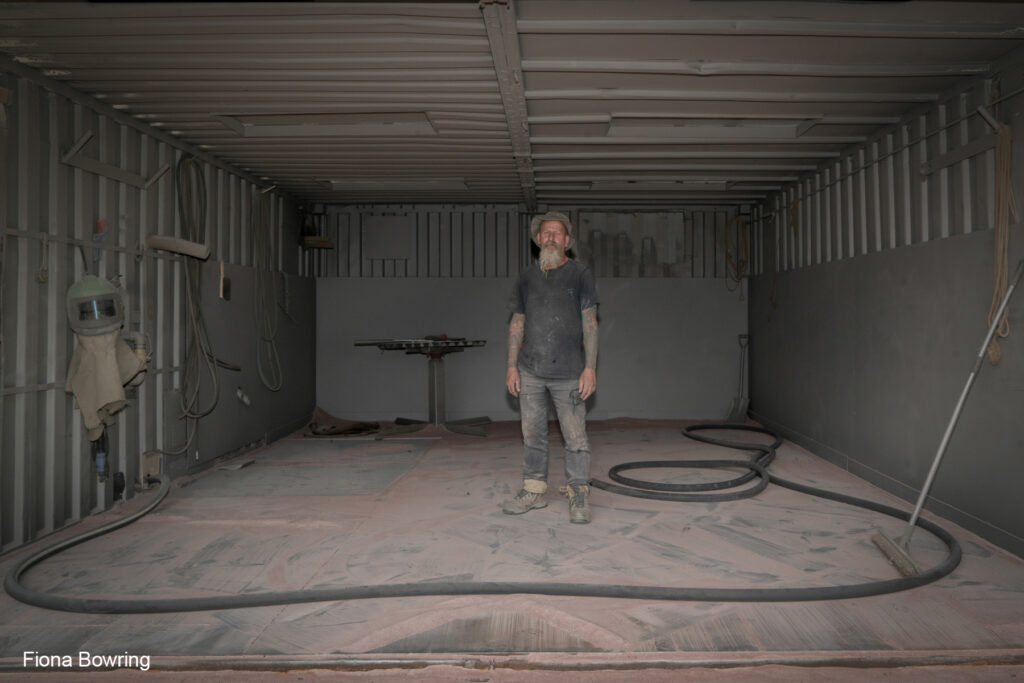
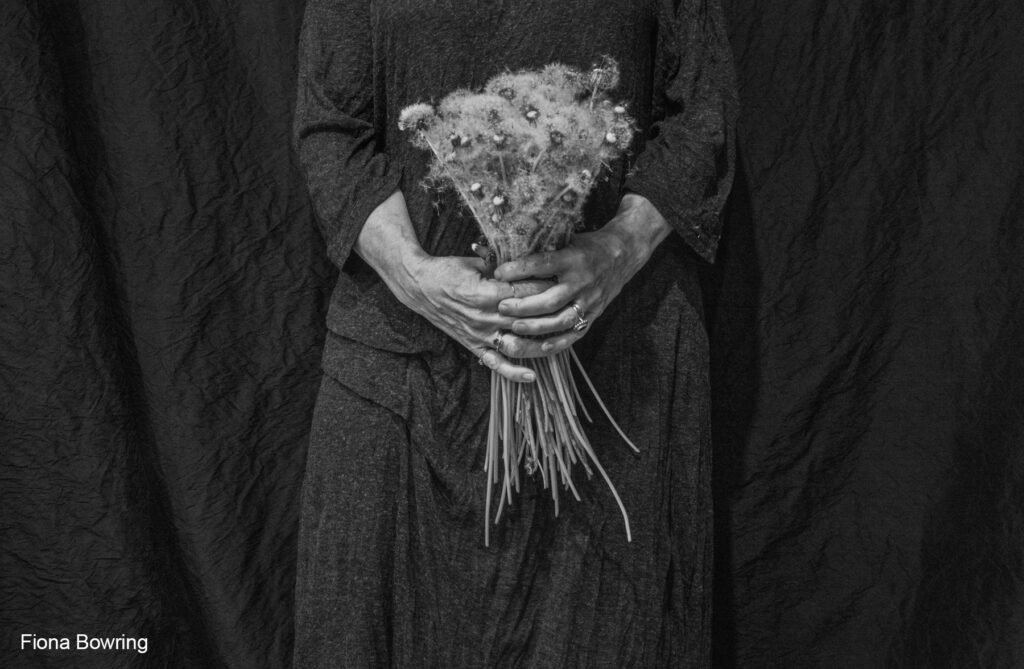
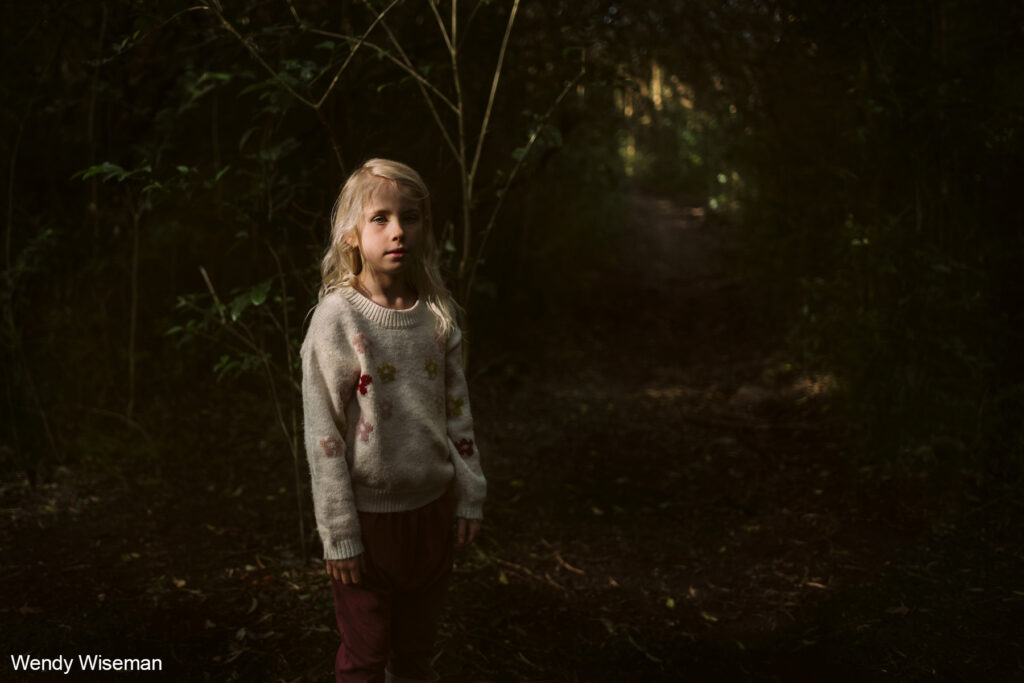
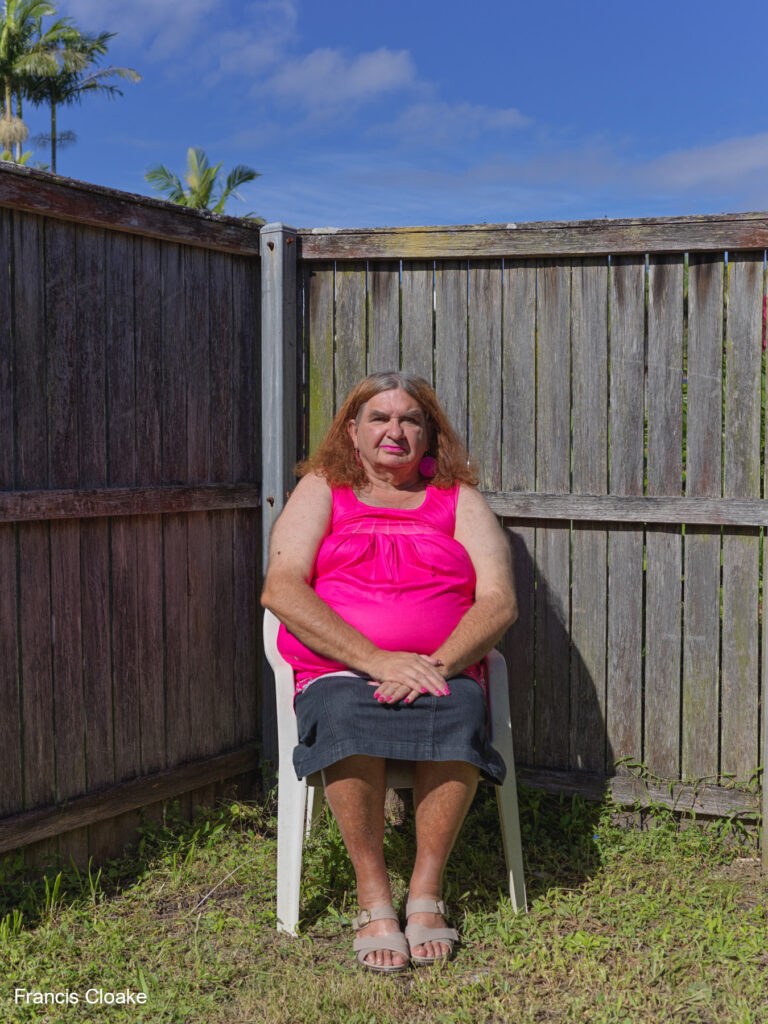
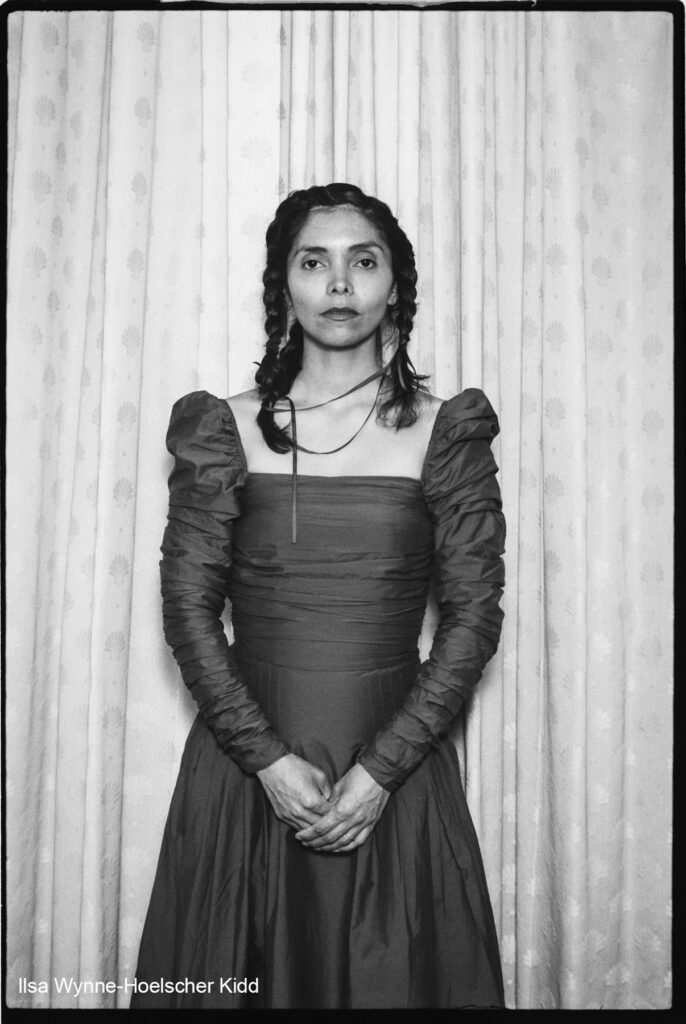
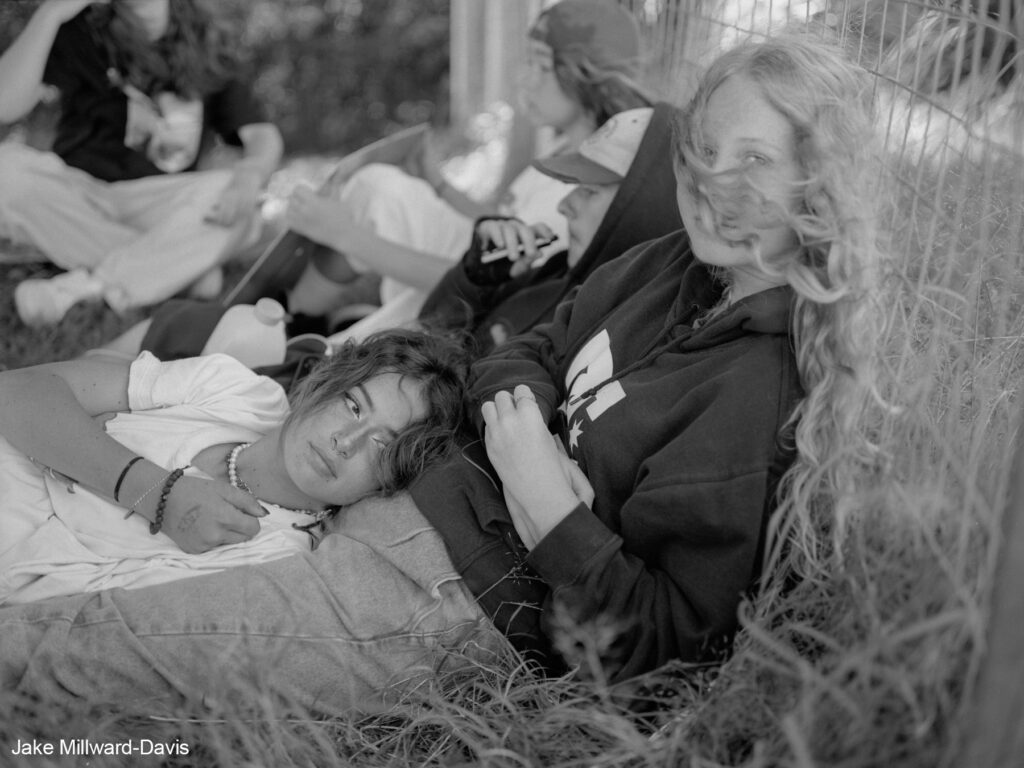
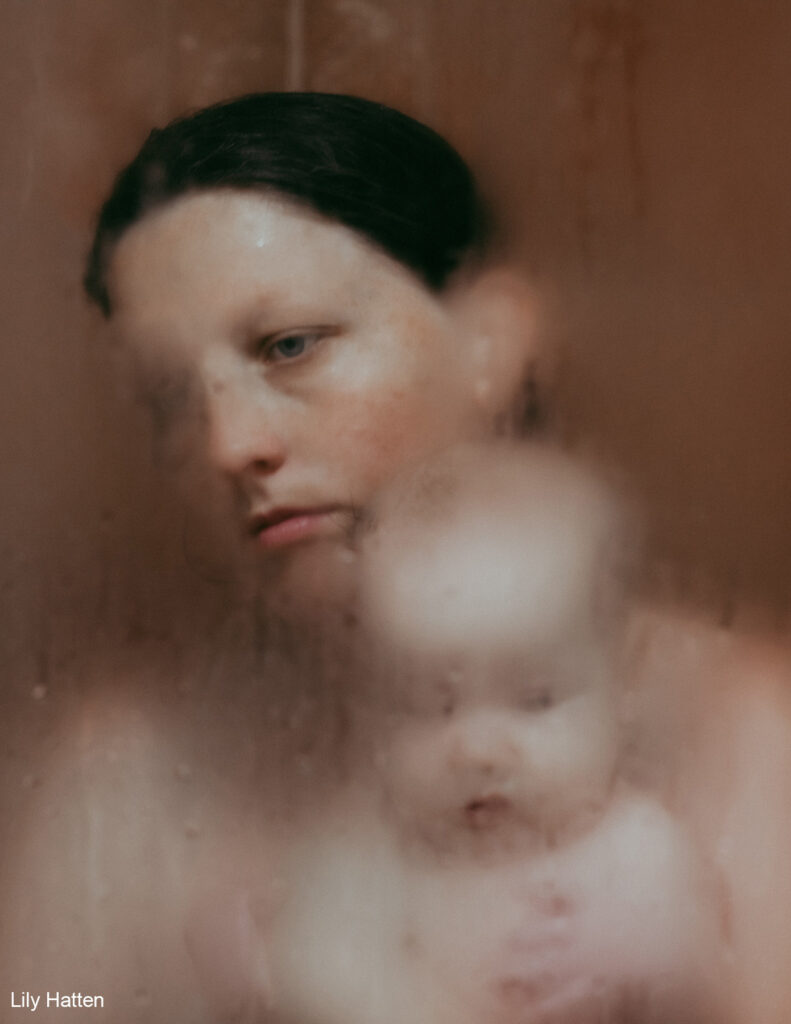
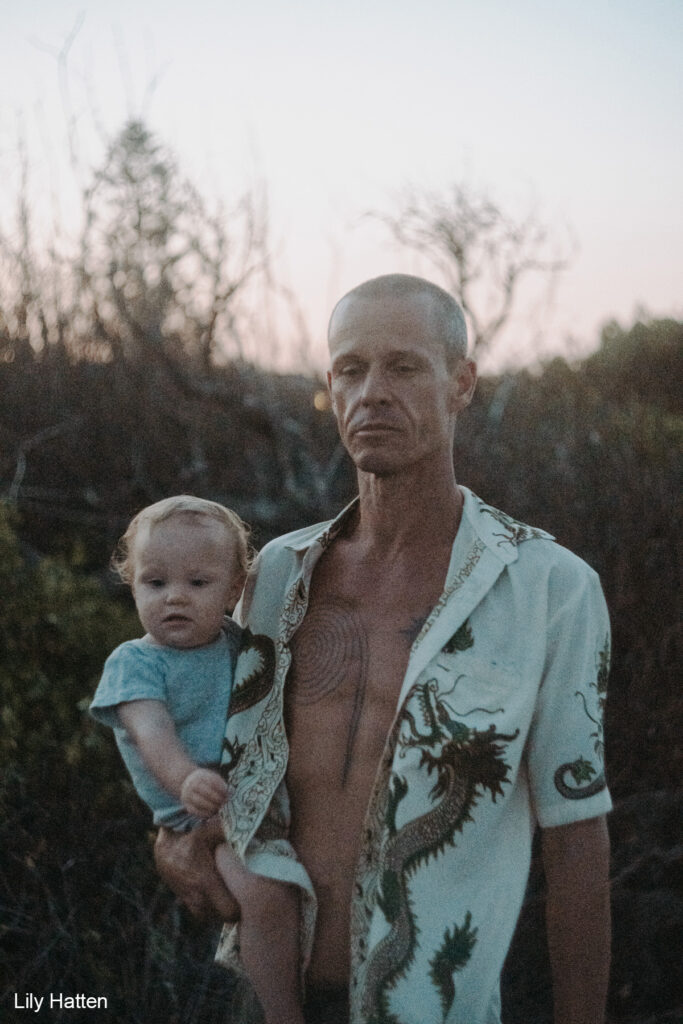

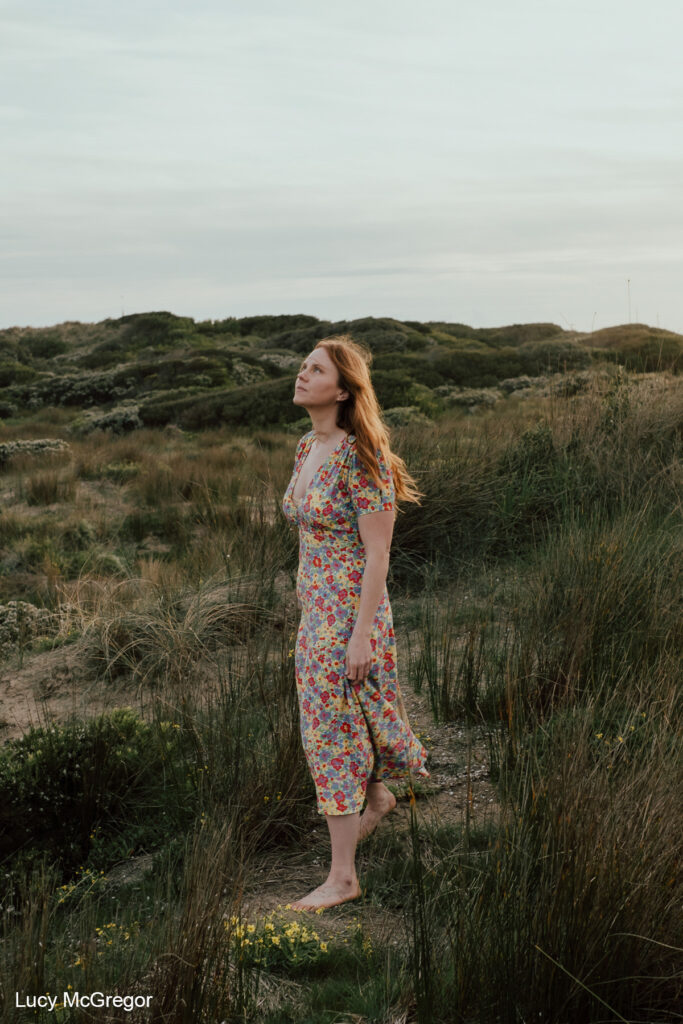
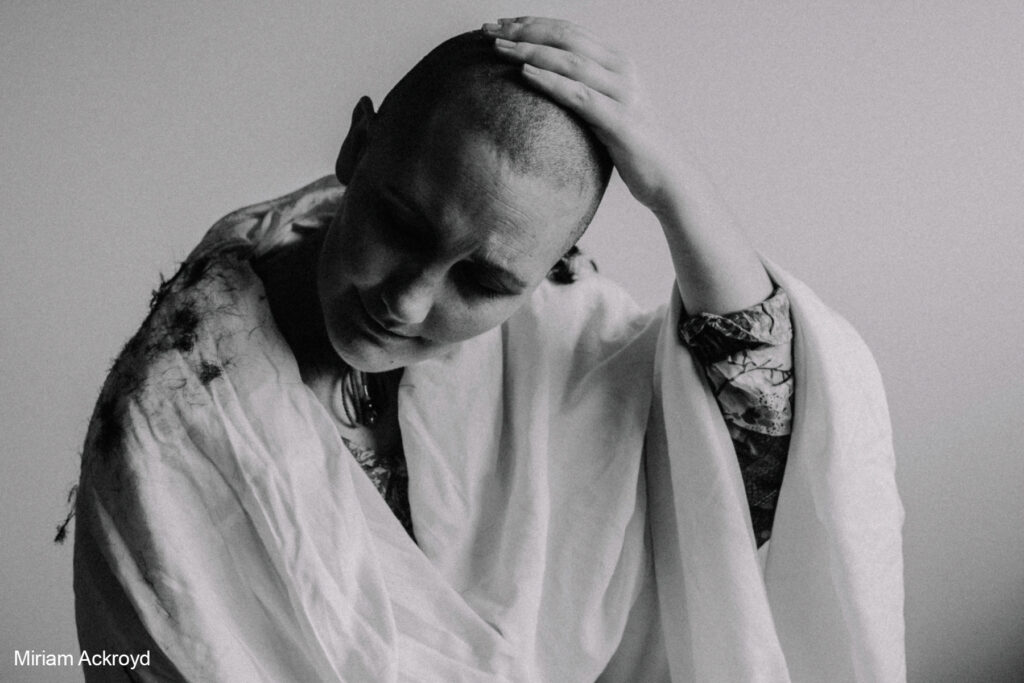
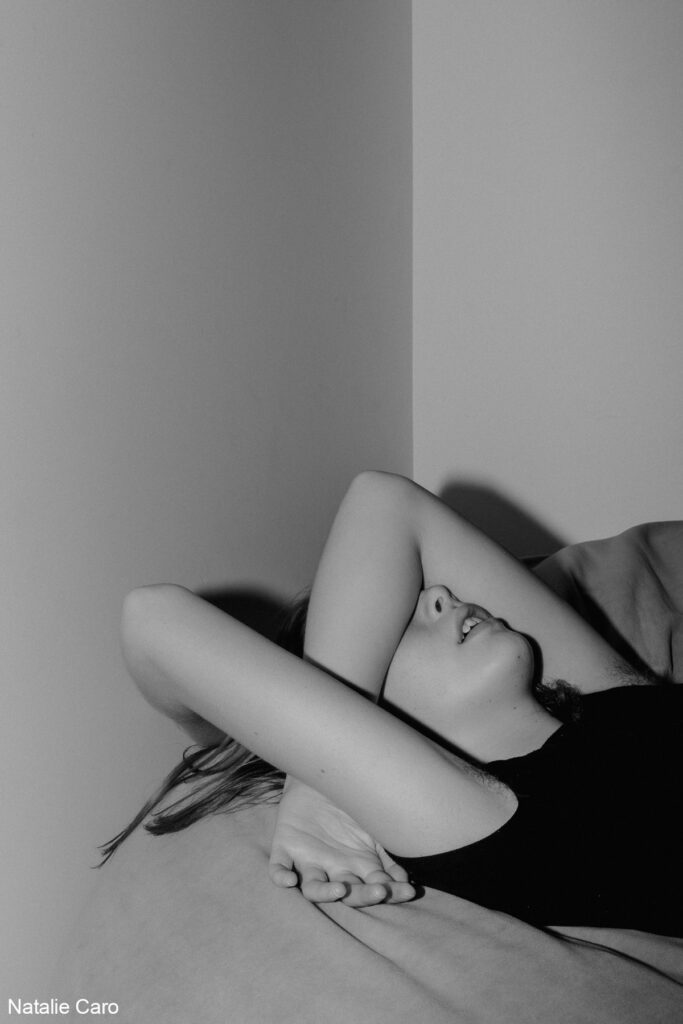

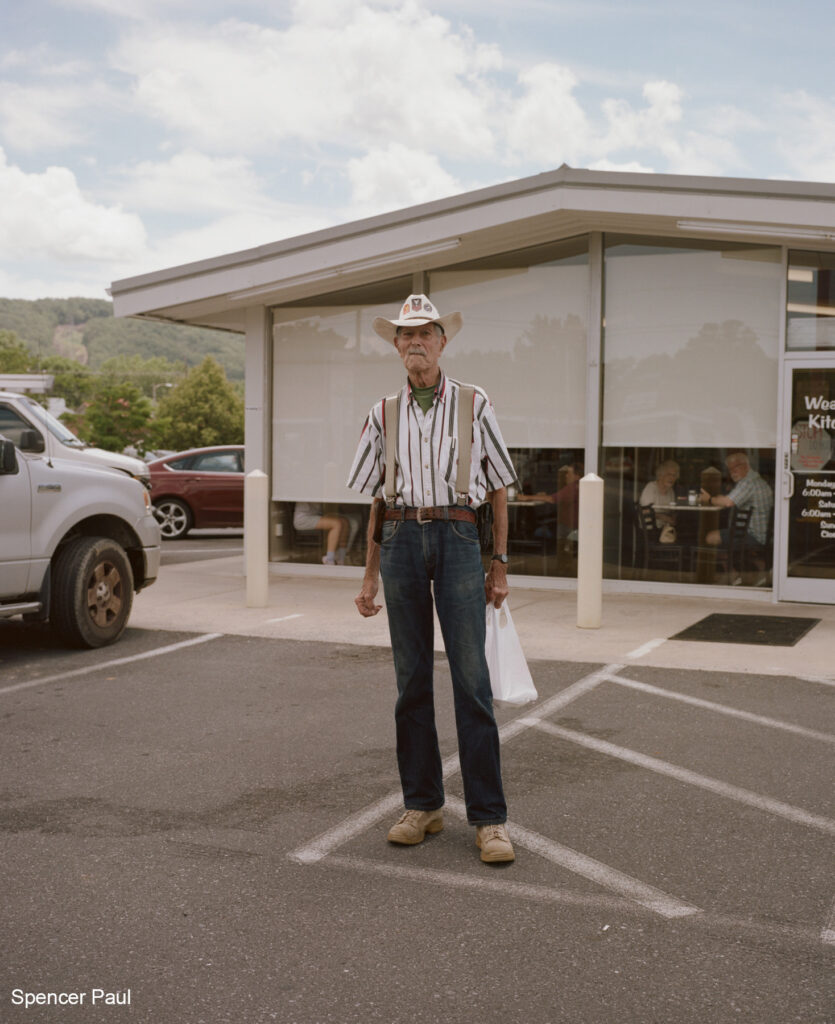
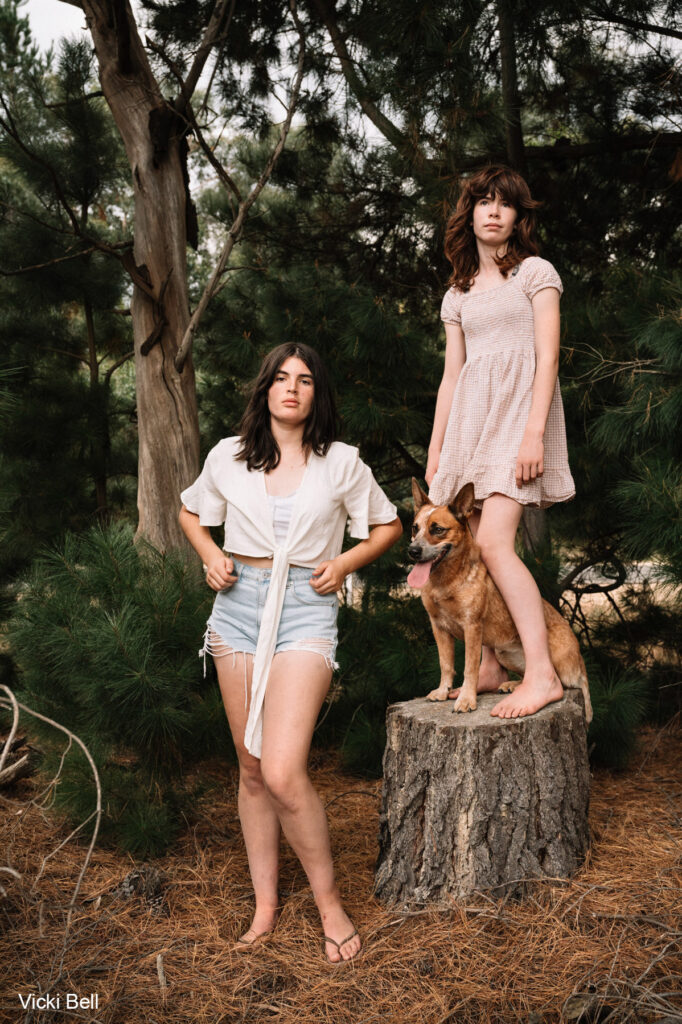




























































































































































































![Tagline_Logo_06 [Converted]](https://photo-collective-site.s3.ap-southeast-2.amazonaws.com/wp-content/uploads/2021/07/29125306/EpsonSQ.jpg)





